Watching professional sports has proven a better-than-average way to keep our minds off of the pandemic (see: the recent Super Bowl). With the pro basketball and hockey seasons already in full swing, locals will soon add Major League Baseball (MLB) into the mix on April 1. This will be a return to form for the league: It’ll mark the first full, 162-game season in two years, after the pandemic-shortened 2020 season.
As it turns out, the Capital Region has quite a lot of baseball history under its belt: It’s been home to scads of professional baseball players throughout the centuries, as you’ll find out in the story below. And though many of them are long gone, it’s worth getting to know who’s who and honoring them for making it to the highest levels of the baseball world.
While there have been a number of local players who have gone pro but never made it out of the minor leagues, for the sake of this story, I’ll be focusing only on players that made it to the MLB level, however short that stint may have been for some. Players have been broken down into two categories as well: Those who are from the Capital Region and those players, not from these parts, who got their start in the Capital Region, before eventually reaching the majors. I also threw in a few players who didn’t grow up or play any type of pro ball up here but were somehow indelibly linked to the Capital Region (the latter two types of players have been denoted below with an asterisk next to their name).
As an added bonus, for all of you sports card enthusiasts out there, I’ve included information about how to track down a copy of each of these players’ cards—if they happen to have them. Sure, you could go out and spend $5.2 million on a 1952 Topps Mickey Mantle card, or you could try to put together the ultimate local baseball card collection. A great place to get started? One of the number of regional card stores that may have some of this cardboard lying in wait (note: on a recent trip to Saratoga Springs’ own The Vault, the owner told me that he’s no longer selling baseball cards).
Thankfully, said collection won’t cost you millions of dollars, but it could certainly add up to the thousands, if you end up tracking down every players’ card or cards on this list. But there’s more than a little value in the proposition: A decent number of Hall of Famers have hailed from the area or played for regional teams, and those cards would be prized pieces of any collection.
Now, get studying.
Matt Albers* (Tri-City ValleyCats)
Let’s get things started off with the (letter) A’s. Matt Albers, a journeyman relief pitcher, has pitched for the Houston Astros—why he was stationed in Troy at the one-time ‘stros-affiliated ValleyCats—Boston Red Sox, Arizona Diamondbacks, Washington Nationals and most recently, the Milwaukee Brewers, among others. It’s pretty easy to find cheap Albers cardboard online, too. Grab his first card in the 2005 Bowman or Bowman Chrome sets (those shouldn’t cost you more than $0.50 apiece). Want to go a little pricier? Albers autographed a limited number of cards in the 2005 Bowman Sterling series ($2-$5), as well as the 2005 Bowman’s Best series ($2-$5).
Hot Tip: You can order a bunch of Albers cards, including his rookie cards, from Rensselaer’s The Collector’s Friend.
José Altuve* (Tri-City ValleyCats)
Part of the Houston Astros’ teams accused (and subsequently fined and hated on relentlessly) for cheating, Altuve has seen his popularity diminish in recent years—but you can’t argue with his .311 lifetime batting average, 2017 MVP trophy and World Series ring that same year. (Or maybe you can?) A ValleyCat for just a brief stint, Altuve has a plethora of modern-era cards, with his rookies being the most sought after and expensive. A raw, ungraded 2011 Topps Update Altuve will only put you back $20-$40.
Hot Tip: I picked up my copy of the 2011 Topps Update Altuve at Yastrzemski Sports in Cooperstown, which is worth a visit after a day at the National Baseball Hall of Fame. It’s a short walk down the street.
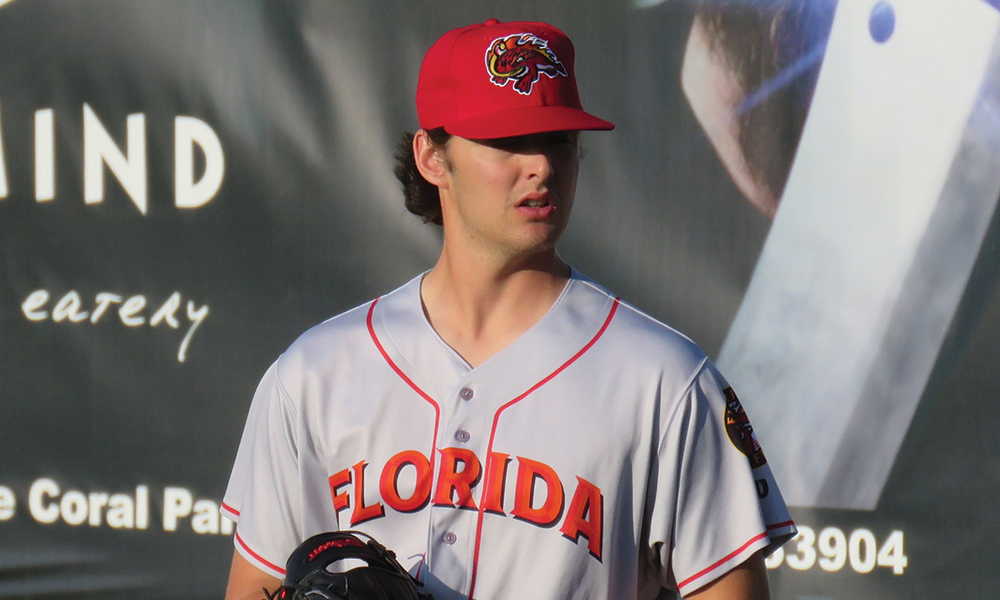
Ian Anderson (Rexford)
You’re going to be seeing a lot of Shenendehowa graduate Ian Anderson pitching for the Atlanta Braves this coming season. He’s an early Rookie of the Year candidate and just has magical stuff. (It might be worth snapping him up on your fantasy baseball squad, too.) Plus, he’s on a young, über-talented Braves team that has the potential to go all the way. In terms of cards, he’s still a relatively affordable commodity, but his cards are in some pretty pricey modern sets. His first two cards can be found in the 2016 Bowman Draft set, a “paper” version and the slightly more expensive “chrome” parallel ($3-$10 apiece, respectively).
Hot Tip: I picked up my copies of Anderson’s rookie card at the Hall of Frames in Yorkville, NY, but you might want to try Finnegan’s Sportscards in Albany or Locker Room 78 in Cohoes, both of whom stock a plethora of modern-era cards.
Brad Ausmus* (Albany-Colonie Yankees)
A former catcher, who played for the San Diego Padres, Detroit Tigers and Houston Astros, among other teams—he never made it to the bigs with the New York Yankees—Ausmus has become a popular MLB manager candidate in recent years, most recently skippering for the Los Angeles Angels of Anaheim. Because he was never much of a star, Ausmus’ cards are dirt cheap: His 1992 Topps issue can be found for $0.50–$1. He also had a number of other cards during the “junk wax era,” in which card companies mass-produced cardboard at an alarming rate. If you want to dig a little deeper, hunt down his 1989 ProCards minor league issue, which will put you back $2-$5—or even less if you’re lucky.
Jesse Barfield* (Albany-Colonie Yankees)
The hard-slugging Barfield will probably be best remembered as a Toronto Blue Jay—he was the American League home run champ in 1986—but he also did a four-year turn with the New York Yankees, hence coming down to the minor league ball club from time to time to tune up. Companies produced a host of Barfield cards throughout his career, which ended in 1994, due to injury, but his best issue is his 1982 Topps rookie card, which will put you back $0.50–$1, tops.
Hot Tip: Besides all of the regular-issue cards, there’s also a completely different world of minor league baseball cards, many produced with low quality control, so they’re tough to find in decent condition. You can find Barfield’s first card in the 1978 TCMA set, which will put you back $30-$60, depending on the seller.
Bill Ahearn (Troy)
A member of the historically terrible 1880 Troy Trojans baseball club, which played at a stadium in Riverfront Park, Ahearn appeared in just a single game that season, collecting a solitary hit in four at bats. He never made it onto a card or a tintype or anything, so no need to go out searching for him.
Hot Tip: Speaking of tintypes, Mark Rucker, the son of a former philosophy professor at Skidmore College, put together a priceless photo archive of early baseball photographs, which still exists online. He served as a researcher for Ken Burns’ epic Baseball documentary. (Check out the archive here.)
Charles “Bock” Baker (Troy)
Another Collar City baller, Baker played just two career games as a Major League pitcher, one for the Cleveland Blues, the other for the Philadelphia Athletics, both during the 1901 season. In that first game, he gave up a staggering—and sadly, AL record-breaking—23 singles in a row to the Chicago White Sox. And sorry, Charlie: That wasn’t enough to get him on a baseball card.
Hot Tip: Schedule a visit to the National Baseball Hall of Fame and Museum’s library and look up Baker’s historic blunder. (Of course, check with the museum to make sure the library is open during COVID.)
Jim Barbieri (Schenectady)
Schenectady’s Barbieri played just a single Major League season in 1966 for the Los Angeles Dodgers, and scored nine runs, swatting three runs batted in, swiping two bags and hitting five doubles in 82 at bats. Strategically, Barbieri also penned a contract with the Topps Company, allowing his image to be featured on a lone baseball card in 1967. You can pick up a copy at a local card shop or on eBay for $1-$3.
Hot Tip: Look out for graded copies of Barbieri’s rookie card, which will cost you anywhere from $15 on the low end to $60 on the high end.
Glen Barker (Albany)
Barker saw action in the big leagues from 1999-2001, serving as a center fielder and pinch runner for the Houston Astros. In 164 total at bats, Barker hit .232, with 38 hits, 3 home runs, 53 runs, 18 RBIs and 30 stolen bases. And he has a plethora of cards to choose from out there. His 2000 Fleer Tradition card can be found for $0.25-$0.50. For a higher-end option, try his 2000 Skybox Autographics card, which can be had for $2-$3 (he also has a number of other limited-run autographed issues that year as well).
Hot Tip: Someone is literally selling Barker’s game-used (and authenticated!) pants on eBay. You can’t make this sort of thing up.
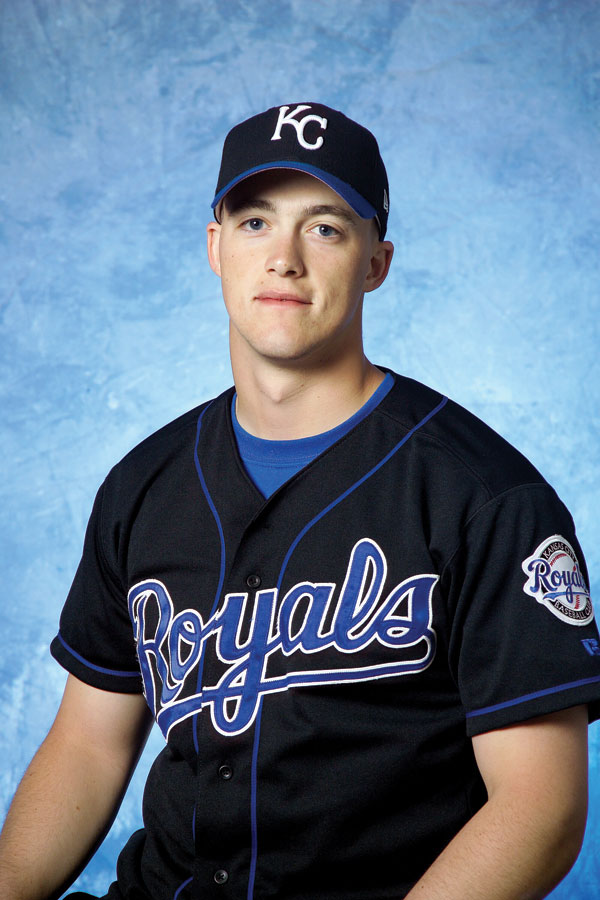
Jonah Bayliss* (Kansas City Royals/Pittsburgh Pirates)
Though Bayliss was born and raised in Williamstown, MA, he currently calls Saratoga home. Bayliss was an active major leaguer between 2005-07, serving primarily as a relief pitcher for the Kansas City Royals and Pittsburgh Pirates. (He now runs an executive coaching business in town.) You can find Bayliss’ rookie cards in the 2006 Fleer, Fleer Ultra, Topps ’52 and Upper Deck sets ($0.50-$1), as well as the 2007 Upper Deck set ($0.50). Want a little more bang for your Bayliss? Grab his 2006 UD Sweet Spot Signatures card, limited to just 150 copies, which features his John Hancock on an authentic slice of baseball for $10-$15.
Edward Beavens (Troy)
Beavens split his short career between the Troy Haymakers (1871) and the Brooklyn Atlantics (1872), playing just 13 total games and collecting a respectable 15 hits. Though Beavens time in the majors coincides with the first few baseball cards on the market, he doesn’t have any cardboard to his name. However, he does appear on a program from the 1871 Haymakers season, but it’s unclear how to price it out. An educated guess would be in the hundreds, if not thousands of dollars.
Hot Tip: If you own any ephemera or photographs of Beavens, you should get in contact with the National Baseball Hall of Fame. Make a donation, for history’s sake!
Roger Bowman (Amsterdam)
A pitcher, Bowman played parts of the season for the New York Giants from 1949-52, before the team moved out to San Francisco in 1957. Bowman also did a brief, ugly spell with the Pittsburgh Pirates in 1953 and 1955, giving up a whopping 35 earned runs and 16 earned runs, respectively, during each of those seasons. Surprisingly, that was enough to get him a contract with the ironically named Bowman Gum Company—a competitor of Topps’ at the time—who put him on a lone issue in its 1955 Bowman set. You can find raw copies of the card for $2-$3, or graded versions, which will cost you $20-$50.
Hot Tip: Another famous Amsterdam native? The late, great actor, Kirk Douglas.
Asa Brainard (Albany)
Most notably a starting pitcher for the 1869 Cincinnati Red Stockings, one of the first and greatest baseball teams of all time, he was one of the highest-paid early players. Prior to arriving in Cincinnati, he pitched for the Brooklyn Excelsiors, Brooklyn Atlantics and Washington Nationals (not to be confused with the modern-day squad). Though neither are technically baseball cards, you can find his visage on the 1889 Sporting Life newspaper tribute panel, which will cost you $100, or the 1910 T&N newspaper stamp, which will put you back $150.
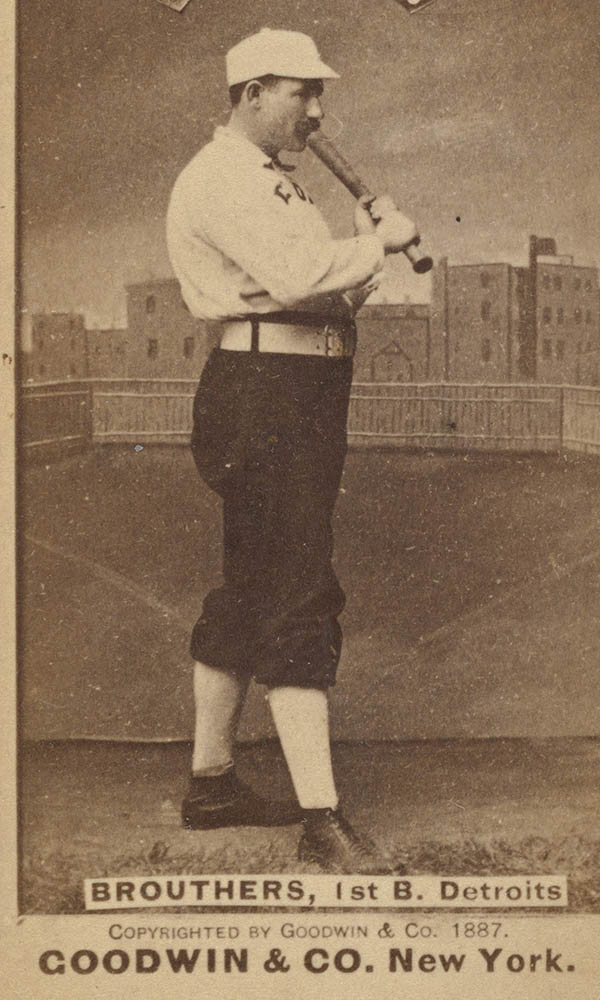
Dan Brouthers* (Troy Trojans)
Not originally from Troy but a member of the ghastly Troy Trojans from 1879-80, Brouthers went on to put together Hall of Fame numbers on nine other ball clubs, ending his 19-year career with a .342 lifetime batting average, having collected more than 2,000 hits and 250 stolen bases. He was elected to the National Baseball Hall of Fame in 1945. Because he was such a superstar in his day, Brouthers did make his way onto a few key pieces of cardboard, all of which command high prices at auction. Examples include his 1887 Old Judge ($3,000-$8,000), 1888 Goodwin Champions ($2,000-$3,000) and 1895 Mayo’s Cut Plug ($1,000-$2,000). In 1950, Callahan also put out a Hall of Fame edition of cards, featuring Brouthers. That issue is a little bit less pricey at $30-$100, depending on condition.
Hot Tip: Interested in tracking down some of Brouthers’ more expensive cards? Check out auction house Heritage Auctions, which regularly hosts vintage baseball card auctions.
Earle Brucker (Albany)
The Capital City native competed as a catcher for the Philadelphia Athletics during the 1937-40 campaigns and ended his career there in 1943. His best year was ’38, when he hit a smoldering .374, with 64 hits, 35 of which were RBIs. Despite his amazing ’38 season, Brucker was left off of a baseball card.
Dick Buckley (Troy)
Buckley was born in the Collar City in 1858 and ended up playing for the Indianapolis Hoosiers, New York Giants, St. Louis Browns and finally, the Philadelphia Phillies over an eight-year career. The catcher/third baseman actually appears on a single baseball card, an 1887 Old Judge card, which was inserted into packs of cigarettes at the time (at the time, kids were allowed to retrieve smokes for their parents, so they could collect while their parents got hooked). On it, he appears as a Hoosier, and you can find copies, depending on condition, for $200-$1,000.
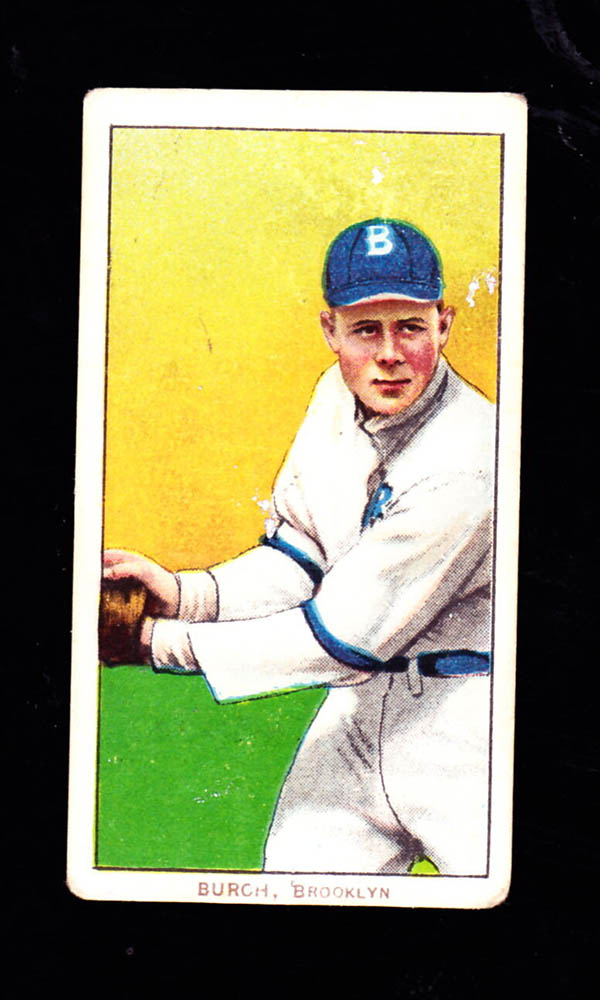
Al Burch (Albany)
An Albany native, Burch put together a six-year career, starting out on the St. Louis Cardinals and ending on the whimsically named Brooklyn Superbas in 1911, amassing a career batting average of .254 and swatting more than 500 hits and 100 RBIs. Given that he competed in the 1900s, Burch made his way into one of the most sought-after sets in collecting history, the 1909-11 T206 set, which features an ultra-rare card of Pittsburgh Pirates star and Hall of Famer Honus Wagner (an obliterated copy just sold for $2.5 million this month). Since Burch was by no means an all-star, his cards are relatively cheap. You can pick up the T206 version of him fielding for about $60, batting for about $70, or there’s a 1909 Colgan’s Chips disc card, which will put you back about $100-$150 (obviously, all of that depends greatly on condition).
Hot Tip: A recent collection of T206 cards sold for a whopping $764,712 (the collection didn’t even include a Wagner!).
John Cerutti (Albany)
Best remembered as a pitcher for the Toronto Blue Jays, Cerutti played from 1985-91, ending his career as a Detroit Tiger. Over his seven-year career, he went 49-43 with a 3.94 ERA and two strikeouts shy of 400 over his career. Truly one of the good guys of the game, Cerutti went on to a second career in the broadcast booth, but tragically died at just the age of 44, due to an irregular heartbeat. Cerutti has a number of cheap cardboard to his name, with issues in the 1986 Donruss Rookies, 1986 Fleer Update and 1986 Topps Traded sets (you can pick his card up for about $0.50). If you want to add a little heft to that price, shoot for the 1986 Topps Traded Tiffany parallel card, which will put you back $1-$2 (Tiffany sets were offered to card dealers at the time for buying a certain amount of cases).
Hot Tip: The look on Cerutti’s face on his 1987 Topps card is priceless. It’s somewhere between “why am I here?” and “hey, baby.”
John Coleman (Saratoga Springs)
Coleman is one of just two Saratoga natives who ever made it to the big leagues, playing from 1883-1890 for a number of ball clubs, including the Philadelphia Quakers, Philadelphia Athletics and Pittsburgh Alleghenys, ping-ponging between the National League and the minors. Coleman has a number of rather dubious MLB and team records to his name, which he landed as a pitcher: He holds the record for number of losses in a single season, when he went an astonishing 12-48 in his rookie year (he also gave up 772 hits, 510 runs and 291 earned runs over the 98-game season). He was around long enough to be able to make on a number of primitive baseball cards, one of which was the 1887 Old Judge issue, on which he appears as a right fielder for Pittsburgh. Despite his embarrassing records, prices for his card run in the $500-$1,000 range, depending on condition.
Hot Tip: Coleman is a bit more famous than he gets credit for: His Old Judge card is part of the permanent collection at the Metropolitan Museum of Art in New York City.
Rip Coleman (Troy)
Walter Gary “Rip” Coleman has something that a lot of baseball players wish they had: a championship ring. A southpaw, Coleman came up with the formidable New York Yankees in ’55, making a single appearance in that year’s historic World Series, in which the Yanks were beaten by the upstart Brooklyn Dodgers. (In Game 4, he gave up consecutive singles to Roy Campanella, Carl Furillo and Gil Hodges, before being pulled.) The Yanks would get their revenge the following season, though, beating the Dodgers in a rematch. Game 5 featured the only no-hitter and perfect game in World Series history, tossed by Don Larsen. Though Coleman didn’t appear in the series, he got his ring with the rest of the squad, nonetheless. Sorry, Yanks fans: Coleman doesn’t appear as a Yankee on any of his cards, though he does feature in the 1957 Topps set ($5-$10), as well as ’59 ($2-$5) and ’60 ($1-$3) sets.
Hot Tip: Coleman’s family auctioned off his World Series ring in 2011 for more than $17,000.
Bill Connors (Schenectady)
Unfortunately, Schenectadian Bill Connors has a negative career WAR (or Wins Above Replacement), a sabermetric stat that basically means he was so bad at pitching when he was in the league, that the team would’ve won more games by simply not starting him. His first season was with the Chicago Cubs in 1966, and he ended his career in ’68 with the lowly Mets, who, ironically, would transform themselves into the “Amazin’ Mets” the following season and win a World Series. Despite Connors’ on-field performance, he still snuck onto a baseball card: He appears in the 1967 Topps set, sharing a rookie card with the equally forgettable Dave Dowling ($1-$2).
Bob Cooney (Glens Falls)
Between the 1931-32 MLB seasons, Cooney won just a single game in six starts for the St. Louis Browns—though he did star during his collegiate years for Fordham University, in which he has been inducted into the school’s Hall of Fame. (He set the university’s single-season earned-run average mark in 1927, with a minuscule 0.85 ERA.) Given his short MLB career, he failed to appear on a baseball card in either of those years.
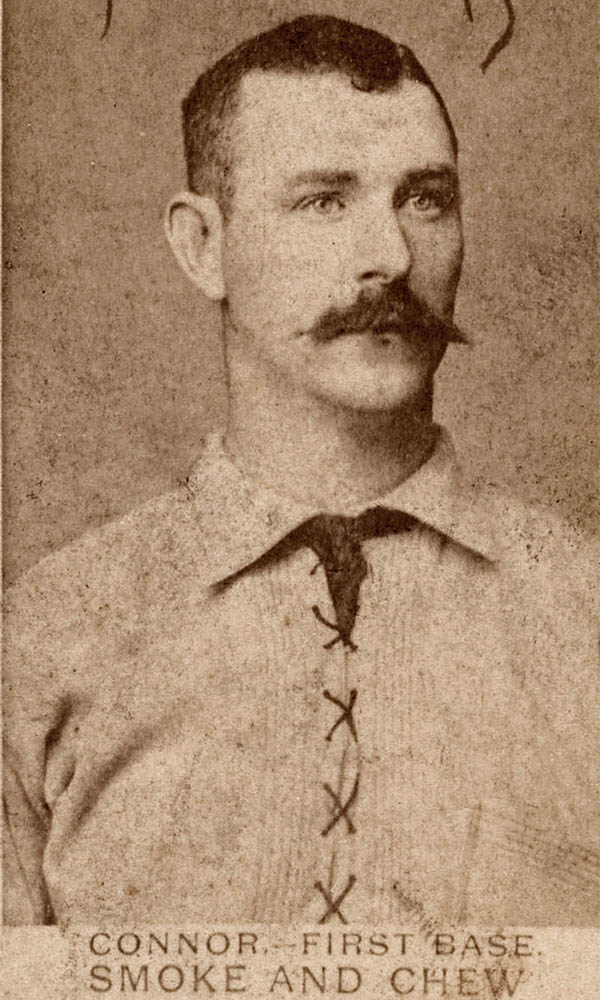
Roger Connor* (Troy Trojans)
Connor is one of five players, including Dan Brouthers (see above), who played for Troy’s dreadful Trojans teams in the 1880s but wound up in the National Baseball Hall of Fame. Connor was an absolute force on the ball field, clubbing a .316 lifetime batting average over an 18-year career that saw him star for the New York Gothams, who later became the New York Giants (and then the San Francisco Giants). He finished his career with the St. Louis Browns, racking up more than 2,400 hits and swatting over 1,000 RBIs. He was best known for his home run power, crushing 138 over his career and was only later bested by one George Herman “Babe” Ruth (who was eventually bested by Hank Aaron, who recently passed away). He was inducted into the Hall in 1976. Since Connor was the Babe Ruth of his time, he wound up on a number of cards, including the 1888 G&B Chewing Gum issue (Heritage Auctions has a copy with a $5,000 starting bid), as well as 1886, 1887 and 1888 Old Judge cards (a high grade of the 1886 sold at auction for more than $40,000 in 2005). The least you’ll pay for a Connor is about $400-$500 for his Buchner Gold Coin issue, which you will likely not find in anything close to decent condition.
Bill Cunningham (Schenectady)
Cunningham played second base for the Washington Senators from 1910-12 and didn’t fare too well on the field or at the plate, ending his career with just a .208 lifetime batting average. (He’s not to be confused with the other Bill Cunningham, who played for the New York Giants in the ’20s.) His not-so-solid career didn’t cough up any cardboard either.
George Davis (Cohoes)
Davis, who kicked off his career with the Cleveland Spiders in 1890, put together a lifetime’s worth of stellar stats that baseball historians took their sweet ass time concluding was enough to induct him into the Baseball Hall of Fame. (One of his career highlights was slugging 135 RBIs for the New York Giants in 1897.) Retiring in 1909, he wouldn’t get the call to the Hall until 1998—some 58 years after his death. Luckily, because he retired in 1909, he was able to make it into the 1909-11 T206 series, with his card commanding a premium because of his subsequent election to the Hall. It runs in the $200-$300 range and could soar from there, depending on condition.
Mickey Devine (Albany)
Albany native Devine did turns with three different teams, the Philadelphia Phillies (1918), Boston Red Sox (1920) and New York Giants (1925), playing just 33 games and hitting just .226. His lack of production is the likely reason he didn’t appear in cardboard form.
Jim Devlin (Troy)
Another one of the many Troy natives on this list, Devlin pitched himself to an 11-10 career record between 1886-89, splitting time amongst the New York Giants, Philadelphia Quakers and St. Louis Browns. He wound up with a respectable 3.38 ERA with 90 Ks in 23 games. Devlin appears in the 1887-90 Old Judge set, and vintage seller Dean’s Cards has a graded Devlin issue, with a grade of 5 out of 10, selling for a little over $1,000.
Jack Doscher (Troy)
Some might call it the “Troylet,” but Troy sure has a way when it comes to producing baseball talent. Doscher pitched in the majors from 1903-08, splitting his time between the Chicago Cubs, Brooklyn Superbas and Cincinnati Reds, logging just 27 games over five years and a record of 2-10. Doscher wouldn’t appear on a baseball card until 1990’s Target Dodgers set, which, if you can find it, will cost you about $0.50.
Doug Drabek* (Albany-Colonie Yankees)
Anyone who grew up in the Capital Region in the 1980s and 1990s knows that he or she was lucky to have the Albany-Colonie Yankees, the AA affiliate to the New York Yankees, in town. Its teams saw many talented players take the field over the years. One such player was Drabek, who would play for the big-league team for just one season. Drabek’s best years, however, were with the Pittsburgh Pirates, where he won a league best 22 games in 1990, with just six in the loss column, and went on to garner that year’s Cy Young award. (Just three years later, though, he’d lose a league’s worst 18 games.) He’d play through 1998, retiring in a Baltimore Orioles uniform. Since Drabek got the call-up to the Yanks in ’86, he appears in all of the year-end “supplemental” issues, including 1986 Topps Traded, 1986 Fleer Update and 1986 Donruss the Rookies (all of which can be had for about $1). You can also find many of his cards scattered throughout history, none of which are all that pricey—though one eBay seller has a gem-mint 10 graded version of his 1987 Topps Tiffany card for sale for $159.
Dave Eiland* (Albany-Colonie Yankees)
Another AC Yanks player, Eiland got the call-up in 1988, pitching for the Yankees through 1991, when he was sent off to the Padres for ’92-93, only to return to the Yanks in ’95. He rounded out his career in 2000 with the Tampa Bay Devil Rays. Though Eiland wasn’t all that successful a pitcher, he would get a second chance as a coach, winning a pair of World Series championships with the Yanks in 2009 and then the Kansas City Royals in 2015. Eiland’s rookie cards can be found in the cheapo 1989 Topps and 1989 Donruss sets ($0.25-$0.50), as well as the 1990 Score set ($0.25-$0.50). He also has a smattering of minor league issues to his name, which can be found for cheap, too.
Kevin Elster* (Albany-Colonie Yankees)
Elster, who spent the first half of his career in a New York Mets jersey, was on the team when it won the World Series in 1986 against the ball-went-through-our-collective-legs Boston Red Sox. Leaving the team in 1994 for the crosstown Yanks (hence his turn in the minors at Albany-Colonie), Elster would end up playing with Philadelphia Phillies, Texas Rangers (he won “comeback player of the year” honors in ’96 there), Pittsburgh Pirates and ended his career with the Los Angeles Dodgers. Elster’s rookie cards didn’t appear in packs and boxes until 1987, but he’s featured in a personal favorite set of mine, the black-bordered 1987 Donruss set ($0.50)—the first baseball cards I ever purchased. You can also find him in the Fleer set that year, too ($0.50). He has countless other issues that are in the same price range.
Morgan Ensberg* (Tri-City ValleyCats)
A former third baseman for the Houston Astros, San Diego Padres and New York Yankees, who spent eight years in the bigs, Ensberg went on to manage Troy’s Tri-City ValleyCats in the New York–Penn summer league in 2017. His first cards appear in 2001, with issues in Upper Deck ($1), Fleer Tradition ($1), Donruss the Rookies ($3) and Fleer Authority ($5). Pay a touch more for his SP Authentic or Bowman issues, but not much.
Hot Tip: There’s a 2017 Tri-City ValleyCats card of Ensberg as a manager floating around cyberspace. Pick it up for a couple bucks.
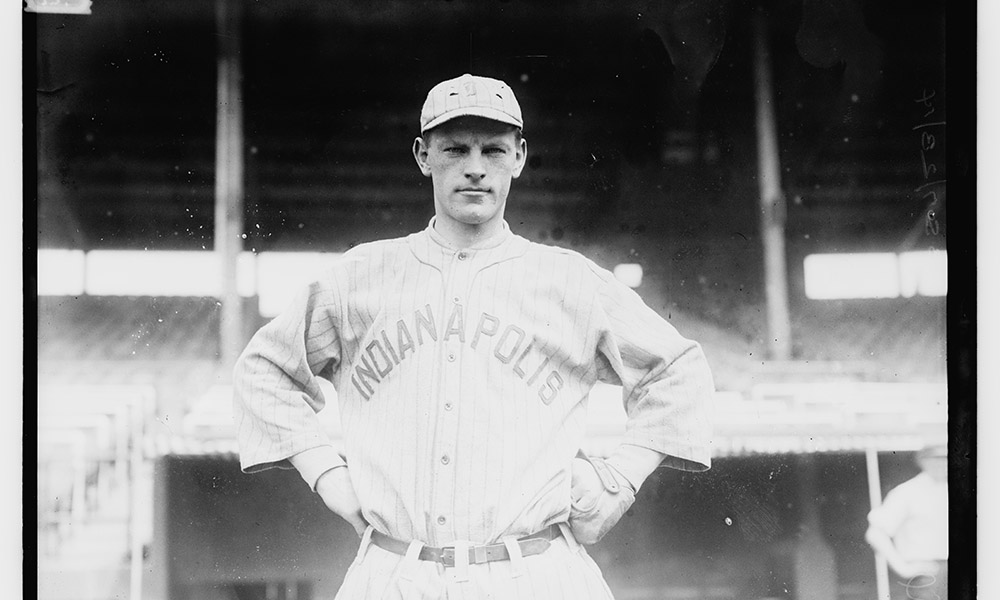
Jimmy Esmond (Albany)
Albany’s Jimmy Esmond played shortstop from 1911-15, beginning his career with the Cincinnati Reds, before heading over the Indianapolis Hoosiers and capping things off with the Newark Peppers. In all, he racked up more than 400 hits, 200 runs, 160 RBIs and 60 SBs. Esmond doesn’t appear to have any baseball cards, but there is a beautiful, black-and-white photograph of him in the Library of Congress’ archives (see above).
Joe Evers (Troy)
Troy’s Joe Evers was given the opportunity to play in just a single game in 1913—as a pinch runner, no less—for the New York Giants. For that reason, his career stat line is blank. His brother, Johnny (see below), however, ended up putting together a Hall of Fame career. Because of Evers literal lack of a career, he does not appear on a single baseball card.
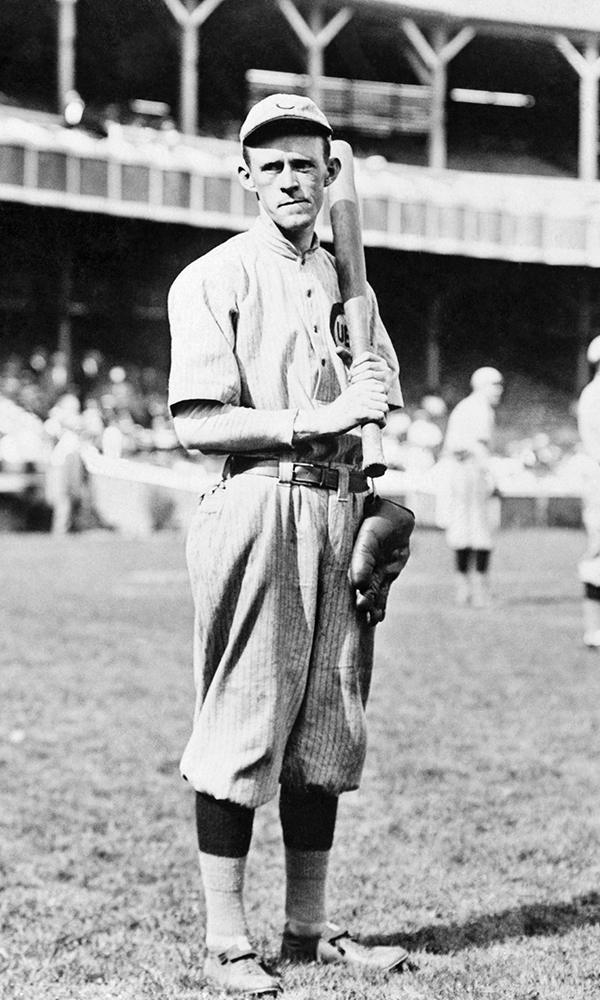
Johnny Evers (Troy)
Without question, Johnny Evers is one of the most talented players on this list, playing the majority of his career as a second baseman with the Chicago Cubs. Evers was not only a wonderful fielder—his infielding skills were immortalized in the poem, “Baseball’s Sad Lexicon”—but he was also a formidable hitter, amassing 1,659 hits, 919 runs and 536 RBIs. He was even a devil on the base path, stealing 324 bases. Evers would win the 1914 MVP award, as well as a trio of World Series rings (1907-08, ’14). And he’d go on to achieve a successful second baseball life as a coach and manager. Because Evers is a HOFer, his cards are difficult to come by and tend to run on the pricier side. A member of the coveted 1909-11 T206 club, his card in the set rings in at $500-$1,000, depending on the variation and condition (it could go way up from there if graded). Though he was long retired at the time, he also appeared in the 1940 Play Ball set, a version of which could run you anywhere from $50-$200, depending on condition.
Hot Tip: The aforementioned Dean’s Cards, based in Cincinnati, OH, has a bunch of Evers cardboard for sale.
Tom Evers (Troy)
It’s possible that a young Johnny Evers got the baseball bug from his Uncle Tom, who played second base for two seasons in 1882 and 1884, for the Baltimore Orioles and Washington Nationals, respectively. He was a decent baller, too, collecting 99 hits in 110 games. But he was nowhere near the calibre of his nephew. Because of his brief stint in the game, this Evers doesn’t appear on a card.
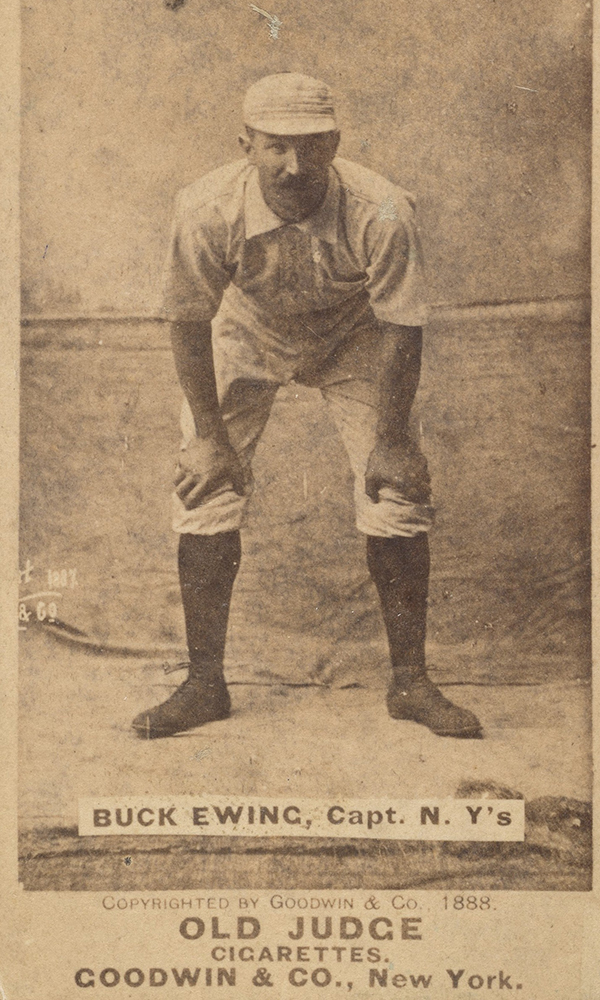
Buck Ewing* (HOF)
One of the five players who played for the putrid Troy Trojans (1880-81) of Troy, NY, who ended up later being inducted into the Baseball Hall of Fame, Ewing put together what can only be described as a superstar career, scattering 1,625 hits, crushing 71 homers, scoring 1,129 runs and knocking in 883 runs, all with a career batting average of over .300. (He was also a defensive gem as well, playing a range of positions, including catcher and first base.) Ewing figures into some of the most desirable baseball card series of all time, with issues in 1895 Mayo’s Cut Plug ($5,000-$7,000), as well as the 1887-90 Old Judge ($8,000-$15,000), 1888-89 Old Judge ($10,000-$40,000) and 1888 Allen & Ginter ($4,000-$15,000). In other words, you need a few bucks to get a few Bucks.
Roy Face (Stephentown)
Another player one that goes down in the annals of amazing names, Roy Face, who pitched nearly his entire 16-year career for the Pittsburgh Pirates, went an astonishing 18-1 in 1959, won a World Series ring in ’60 and led both leagues in saves in ’58 and ’62, among other highlights. (If you’re wondering, Stephentown is just outside of Troy, and Face played for Averill Park High School.) Face, who? You’ve probably never heard of him, because he was predominantly a relief pitcher and worked as a primitive closer, before teams paid millions of dollars to hand a guy a ball for a single inning or a fraction of one. He was also a workhorse, putting in a grueling 848 career games and leading his league in games finished several times. Face has some great vintage cardboard to his name, but the one you should be trying to track down is his absolutely gorgeous 1953 Topps rookie card, which features his painted likeness. That’ll put you back anywhere from $50-$300, depending on condition or grading. If you want to go the cheapo rout, pick up the 1991 Topps Archives reprint of the card, which will cost you just $0.50. Face it, this guy’s rookie card is worth every penny!
Bill Fagan (Troy)
A pitcher and outfielder, Fagan played just two seasons in the bigs, one with the New York Metropolitans (1887), the other with the Kansas City Cowboys (1888). He has a -2.8 WAR (Wins Above Replacement), which basically means if he hadn’t played at all, it would’ve been a lot better for those teams. Because of his short stint and lousy career, Fagan doesn’t appear on any cardboard. Sorry, kids, no Fagan posters either!
Mike Fiers* (Saratoga Phillies)
Do you smell smoke? Pitcher Fiers (pronounced “Fires”) makes this list for his turn with the short-lived Saratoga Phillies in 2008, when he was still a college student. (He was the team’s No. 1 starter.) Though Fiers has shown flashes of brilliance throughout his 10-year career, pitching two no-hitters and going 15-4 in 2019 with the A’s, he’s probably best known as the player who blew the whistle on the Houston Astros’ cheating scandal, which led to fines and a lot of bad blood. But it was the right thing to do. In terms of cardboard, Fiers has a fair amount of it, but his best card is his 2012 Bowman rookie card ($0.50-$1). Want a little more fire in your engine? Chase his 2013 Topps Turkey Red rookie autograph card, which will put you back anywhere from $10 to $70, depending on what serial-numbered variation you can get your hands on. A recent eBay listing had the one-of-one version available for about $200.
Derek Fisher* (Tri-City ValleyCats)
When Fisher was in the Astros organization in 2014, he spent the summer in Troy, playing for the ValleyCats. He’s since been traded to the Blue Jays, where he put up ugly numbers in 2019-20, but is still in the organization and could see some playing time this coming season.
Hot Tip: One of my pandemic projects has been putting together the 2014 Bowman Draft set. A pre-rookie card of Fisher’s appears in both the regular series and chrome one (I have a few doubles, if you’re interested; it’ll put you back $0.50-$1, tops). If you’re seeking out his regular-issue rookie card, that came in the 2017 Topps Update set (also $0.50-$1)
Matty Fitzgerald (Albany)
Albany native Matty Fitzgerald appeared in just 11 major league games over two seasons with the New York Giants between 1906-07. Despite just the two-season run in the majors, Fitzgerald does feature into Ullman’s 1906 postcard series, as well as the rare 1912 Colman’s Chips red border set, which in pretty lousy shape, could still cost you in the $1,000-$1,500 range.
Ron Guidry* (Albany-Colonie Yankees)
Yankees fans will remember southpaw Guidry—a.k.a. the “Louisiana Lightning” or “Gator”—from his stellar playing days in the 1970s and ’80s. The pitcher hurled his way to a 3.29 lifetime ERA, with a career record of 170-91 and more than 1,700 K’s. During the ’78 season, Guidry led all major league pitchers with 25 wins and a 1.74 ERA, along with an incredible nine shutouts. He also went 22-6 in 1985, an AL best in wins. He won two World Series rings with the Yanks (1977, ’78), won the ’78 Cy Young and was a four-time All-Star. After sustaining an injury in ’86, the year he served as the team’s co-captain with Willie Randolph, Guidry spent a memorable night of “rehabilitation” at Heritage Park, playing for the Albany-Colonie Yankees. Guidry, who played from 1975 to 1988, has a panoply of junk wax issues to his name, many of which can be had for $0.50–$2 on the high end. But fans should make a bee-line for his 1976 Topps rookie card, raw copies of which can be had for $10-$30. If you want to add a little spice to your collection, grab a gem-mint graded copy for $1,000-$2,000.
Ralph Ham (Troy)
Playing just a single season in 1871 for the horrifically named Rockford Forest Citys of Rockford, IL, Ham played in just 25 games but racked up 28 hits, 25 runs and 12 RBIs. The sandwich that is today’s baseball card hobby sadly doesn’t includes any Ham.
Jack Hammond (Amsterdam)
Hammond, who was born and raised in Amsterdam, appeared as a second baseman and pinch runner in 45 games, beginning in 1915, first with the Cleveland Indians, eventually ending his baseball career on the Pittsburgh Pirates in 1922. Hammond does not appear on a baseball card.
Billy Harrell* (Loudonville)
Harrell, who was born in Pennsylvania but attended Siena College, was a two-sport phenom, playing basketball and baseball—though it would be the latter sport that he’d become known for at the professional level. Playing third base, shortstop and second base, Harrell first entered the Negro Leagues in 1951, eventually landing on the Cleveland Indians roster in ’52, less than a decade after Jackie Robinson broke the league’s color barrier. His most productive year was 1958, when Harrell played 101 games, slugging 50 hits, seven of which were homers, and batting in 19 RBIs (he also swiped 12 bases). Harrell ended his career in Boston in 1961. Since Harrell played during the sweet spot of card production by Topps, he has a number of pieces of cardboard to his name, including his 1958 Topps rookie card, which will put you back anywhere from $10-$50, depending on condition. One seller on eBay has the card in a PSA 8 out of 10 for $230.
Brendan Harris (Albany)
Harris, who was born in Albany and starred for Queensbury High School, turned himself into the ultimate journeyman infielder, playing for the Chicago Cubs, Montreal Expos, Washington Nationals, Cincinnati Reds, Tampa Bay Rays, Minnesota Twins and Los Angeles Angels of Anaheim. In the aughts, baseball card companies began producing a number of special cards that were next to impossible to pull from packs and command insanely high values, regardless of how talented the player is on the front. Harris’ rarest cards on eBay ring in at the $10-$15 range (see: his Bowman Chrome gold refractor, serial numbered out of 170 total), and if you’re looking for something a little bit more down to earth, grab his 2003 Bowman rookie card, featuring him in a Cubs jersey, for about $1-$2.
Hughie Hearne (Troy)
A catcher by trade, Hearne played three seasons with the Brooklyn Superbas between 1901-03, collecting 83 hits and 35 RBIs and logging a respectable .283 lifetime batting average. Unfortunately, Hearne doesn’t appear on any cardboard.
Harry Heitmann (Albany)
After showing promise as a pitcher in the minor leagues, Heitmann was called up and played just a single game for the Brooklyn Robins in 1918, giving up four earned runs in 0.1 innings and ballooning his nascent major league ERA to 108.00. Legend has it that Heitmann was so pissed off about his performance that he packed up his gear, midgame, and enlisted in the Navy. (According to a 1918 clipping from the Sporting News, he had actually enlisted the previous week.) As luck would have it, Heitmann’s “shortest pitching career” feat was captured in the 1974 Fleer cloth patches set, and his card can be had for $2-$3.
Kiké Hernández* (Tri-City ValleyCats)
Having just been signed by the Boston Red Sox, Herna´ndez has been in the majors since 2014, when the Houston Astros brought him up as a rookie (hence his appearance in Troy with the ValleyCats). Hernández is best known for his years in Los Angeles with the Dodgers, though, where he just won a World Series with the team during its COVID-shortened 2020 campaign. Most of Kiké’s cards can be had in the $2-$20 range, but if you want to dig deeper, try finding his 2009 Bowman Chrome Xfractor rookie card, which was recently selling on eBay for $275.
Sterling Hitchcock* (Albany-Colonie Yankees)
Besides having one of the greatest names in baseball history, Hitchcock also spent some quality time in an Albany-Colonie Yankees uniform in 1992 and 1994. The lefty would put together a respectable 13-year career between the Yanks, Seattle Mariners, St. Louis Cardinals and the San Diego Padres, where he’d end up in ’97-’01, then back again in ’04 for his curtain call. You can find Hitchcock’s rookie cards peppered throughout 1993, as well as a 1992 issue by Skybox featuring him in his AC Yanks duds.
Jeff Hoffman (Latham)
Righty pitcher Hoffman, who starred for Shaker High, was drafted with the ninth overall pick in the 2014 MLB draft by the Toronto Blue Jays. He never saw any time with the Jays, though, being dealt to the Rockies as part of the Troy Tolowitzki blockbuster deal in 2015. Though Hoffman appeared in 68 games in five years, he was unable to find his rhythm, logging a rather ugly ERA of 6.40. Hoffman was traded to the Reds after the COVID-shortened 2020 season. Maybe he can make some magic this season? Since I’ve spent most of the pandemic collecting the 2014 Bowman Draft set, I know that Hoffman’s first official card is in it. In fact, I’ve bought so many boxes that I could hand out Hoffman rookies ($0.50) as party favors. Want one? You can pick up the autographed chrome version from the set for $5-$10. His first official card in a Colorado Rockies uniform wouldn’t appear until 2017, and he appears in all of the major issues ($0.50-$1), along with a number of rarities that will put you back $5-$25 on the regular.
Chris Hoiles* (Glens Falls Tigers)
Before Glens Falls went all-in on hockey, the city had its own minor ball club in the Glens Falls Tigers, which actually saw some pretty talented ball players throughout its short-lived lifespan between 1986-88. Catcher Hoiles, who would end up putting together a 10-year MLB career, all with the Baltimore Orioles, was one of its biggest stars. I was lucky enough to pick up a 1987 ProCards minor league set of the Glens Falls Tigers a few years ago at Hall of Frames in Utica. (It put me back about $30.) Given that he starred during the overproduction years of the ’90s, it’s pretty easy to find Hoiles cardboard from 1990 all the way up to his final year in 1998. None of his common cards should cost you more than $0.25-$0.50.
Gary Holle (Watervliet)
Watervliet’s lone major leaguer, Gary Holle, played just five games at the MLB level in 1979 for the Texas Rangers. However, he did make it onto two separate baseball card issues: one in the 1978 TCMA Holyoke Millers set, which will cost you about $25 (the card itself can’t be more than a few bucks, if the seller selling it is kind enough to break up the set for you); and another picturing him on the 1981 Edmonton Trappers team, produced by the bygone supermarket chain Red Rooster (that’ll cost you about $2).
Pat Kelly* (Albany-Colonie Yankees)
Kelly was one of the top prospects in the Yankees organization in the early ’90s and played a total of seven seasons with the Yanks, seeing time with AC in ’90 and ’92. He’d also do time with St. Louis before ending his career in Toronto in ’99. Speaking of his time with the AC Yanks, you can find cards featuring Kelly in an Albany uniform in the 1990 Best, 1990 Star and 1990 ProCard sets (all in the $1 range). His cards can also be found scattered throughout the ’91 sets, including 1991 Stadium Club, which at the time, was one of the most sought-after sets of the era. Because of overproduction, it’s not worth as much as it used to be, and Kelly’s card can be had for as cheap as $0.50.
Roberto Kelly* (Albany-Colonie Yankees)
Another Yanks prospect, Kelly ended up putting together a decent career statline—.209 average, 1,390 hits, 124 HRs, 585 RBIs, 234 SBs—over a 14-year career that would see him in Yankees pinstripes from ’87 to ’92 and then, after a multi-team hiatus, in 2000, where he ended his career. (He appeared as an AC Yank in ’86.)
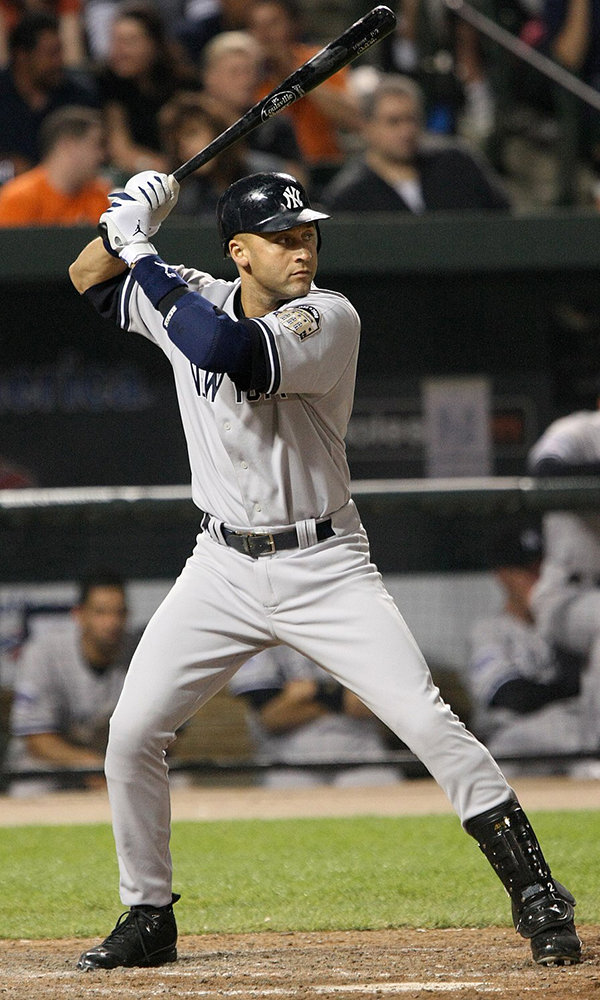
Derek Jeter* (Albany-Colonie Yankees)
You can’t not include Jeter on a Capital Region mega-list like this one, right? The “Captain” briefly appeared in an AC Yanks uniform during the 1994 season, logging 34 games and slugging .377, with 13 RBIs and 12 stolen bases. Of course, he’d go on to a Hall of Fame career, winning Rookie of the Year honors in 1996 and an astounding five world championships with the Yanks (1996, 1998, 1999, 2000 and 2009). He was also a 14-time All-Star and named World Series MVP in 2000. As a kid, I went to see a number of AC Yanks games and at one of them, picked up the 1994 yearbook, which included a three-baseball-card insert in the middle, one of which featured Jeter. A Red Sox fan my entire life, I tore it out and sold it to The Vault on Caroline Street for a nominal fee. A graded gem-mint version of it is now selling for about $50,000 on eBay. A graded gem-mint version of his 1993 SP rookie card, which I never did own, realized $180,000 at auction early last year (it is likely worth a lot more now). Jeter might be one of the most overproduced stars in the card market today, so you can find cheaper versions of his cards out there. I’d suggest his 1993 Topps rookie card, which can be had for about $20-$30.
Hot Tip: Since there are tons of Yankees fans in the area, most of the collectibles shops will have a range of Jeter cards for sale. Try Al’s House of Sports Cards in Schenectady, which should have a great collection of his stuff. You might even get a deal.
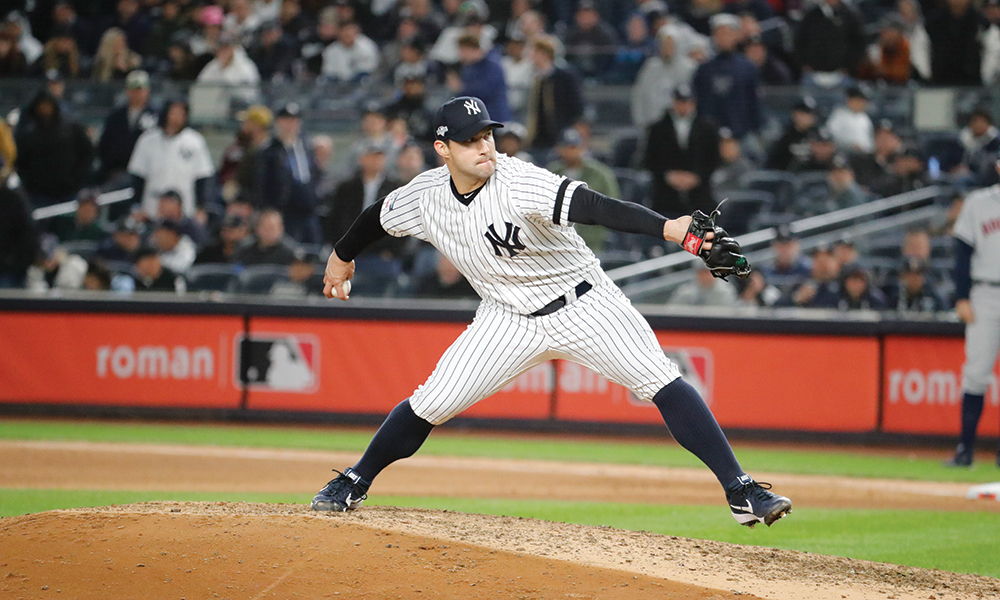
Tommy Kahnle (Latham)
Kahnle, who grew up in Latham and starred for Shaker High School, was drafted by the hometown Yanks in 2010, but got picked up in the Rule 5 draft a year later by the Colorado Rockies. After a brief stretch with the Chicago White Sox, Kahnle then wound in Yankees pinstripes again from 2017-20, putting up some decent numbers in relief and subsequently getting picked up by the defending world champion Dodgers in the offseason. Having just undergone Tommy John surgery last August, he’s hoping to play at some point in the 2021 season, but it’s unclear when that will be. Kahnle’s cards, which can be found as far back as the 2013 Bowman Chrome set ($1-$2), are on the cheaper side. A few sellers have his 2014 Bowman Prospects autograph card for sale for less than $20. And because the Rule 5 draft hadn’t happened yet, he still appears in a Yanks uniform!
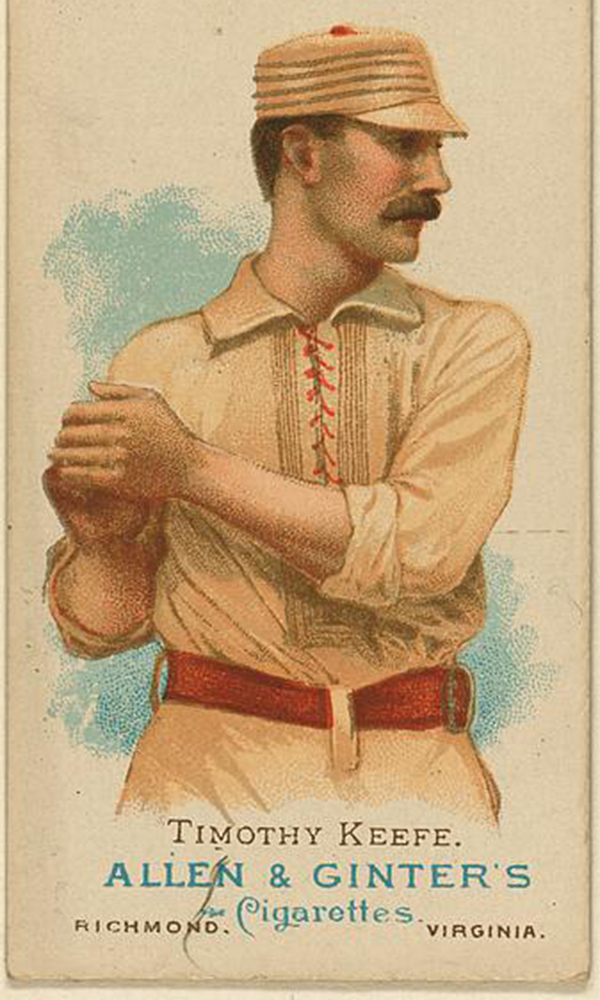
Tim Keefe* (Troy Trojans)
Another ex–Troy Trojan who wound up in the Hall of Fame, Keefe, a star pitcher, might have some of the best numbers of any of the pitchers on this list. Winning a staggering 342 games over a 14-year career, Keefe ended it with an exceptional 2.63 career ERA, 2,564 K’s and a minuscule 1.123 WHIP (walks and hits per innings pitched). In the 1886 season with the New York Giants, Keefe won a baseball’s-best 42 games, something that will never, ever happen again in our lifetime, thanks to middle relievers, closers and multi-million-dollar arms. Posthumously inducted into the Hall of Fame in 1964, Keefe has a gaggle of pricey issues that only the most serious of card collectors will likely ever have the opportunity to own. My favorite is the 1888 Allen & Ginter issue (at left), which, in near-mint condition, graded, could cost you $5,500 (likely a lot more, given how hot cards are these days).
Hot Tip: Keefe cards can be had for a lot less, too. The National Baseball Hall of Fame in Cooperstown sells postcards of each of its inductees, and the Keefe is just $3.99 (grab one here).
Bill Kellogg (Albany)
Capital City native Kellogg played just a single season for the Cincinnati Reds in 1914, logging just 22 hits in 126 at bats. Given Kellogg’s short stint in the majors, there wasn’t enough time to capture his face on cardboard.
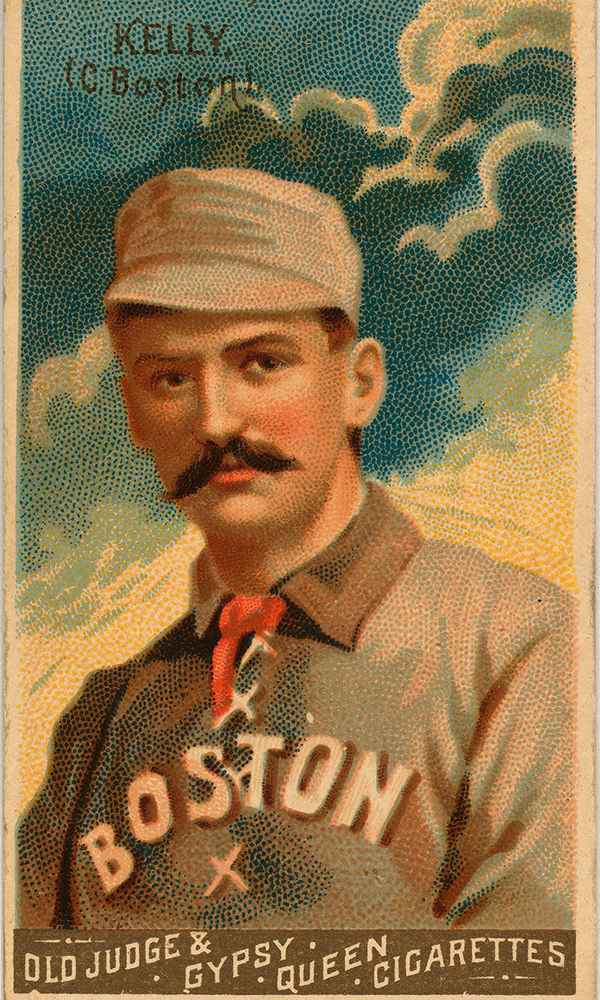
King Kelly (Troy)
Troy’s Michael Joseph Kelly, better known to baseball buffs as “King Kelly,” was not one of the poor souls that had to endure being on the Troy Trojans before weaving himself into the Hall of Fame history books. (He did play while the club was around, though.) Beginning his career with the Cincinnati Reds in 1878, Kelly would end up doing time with the Chicago White Stockings, Boston Beaneaters, Boston Reds, Cincinnati Kelly’s Killers and New York Giants, before calling it quits in 1893. But he put together a superstar career, hitting a lifetime .307, with 1,813 hits, 1,357 runs, 950 RBIs and 368 SBs. His career WAR (Wins Above Replacement) is 46, meaning he was a valuable commodity anywhere he went. Kelly was even a bit of an early self-marketer, penning an autobiography in 1888, entitled Play Ball. As you can imagine, Kelly’s cards don’t come cheap: His 1888 Goodwin Champs card (pictured above), graded 8 out of 10, was sold by Heritage Auctions for $36,000 in 2018.
Henry Killeen (Troy)
In the vein of Harry Heitmann, the one-and-done pitcher, Troy native Killeen also pitched a single game for the Cleveland Spiders of the National League during the 1891 season, surrendering six earned runs and a dinger but finishing the game as the pitcher of record. Killeen doesn’t have any cardboard to speak of—and be sure not to confuse him with Brooklyn native Evans Henry Killeen, who pitched briefly for the Kansas City Athletics in 1959.
Dallas Keuchel* (Tri-City ValleyCats)
Upon being drafted from the University of Arkansas in 2009 by the Houston Astros organization, Keuchel began his professional pitching career with none other than the Tri-City ValleyCats of Troy (he would later return there for a brief rehab outing in 2017). After his call-up in 2012, Keuchel had a slow start, but turned himself into one of the league’s elite pitchers, going a league-best 20-8 in 2015 and winning the AL Cy Young award. Two years later, he won a world championship with the Astros. He then spent a so-so year with the Atlanta Braves in 2019, before signing a three-year deal with his current ball club, the Chicago White Sox. In the COVID-shortened 2020 season, he went 6-2 with a 1.99 ERA. Modern sets are plastered with cheap, obtainable Keuchel cards, but if you want to grab his first issue, you’ll have to go back to the 2009 Bowman Draft set ($1-$2). Keuchel also has a number of more expensive rarities, including his 2016 Panini National Treasures Clear Signatures card, which is numbered just 1 of 75 and can be had for $200-$400.
Steve Kuczek (Amsterdam)
Another one-gamer, Amsterdam native Steve Kuczek played a single matchup in 1949 for the Boston Braves, logging a single at bat and roping a double. While Kuczek doesn’t have any cardboard to his name, there are a number of cut Kuczek signatures available on eBay in $25-$50 range.
Gene Lansing (Albany)
Also playing just a single game in his major league career, Albany’s Lansing pitched in a single outing during the 1922 season for Boston Braves, surrendering a ghastly 28 runs (27 of which were earned), 46 hits and 22 walks. Obviously, none of the day’s card producers saw much of a reason to put Lansing on a card.
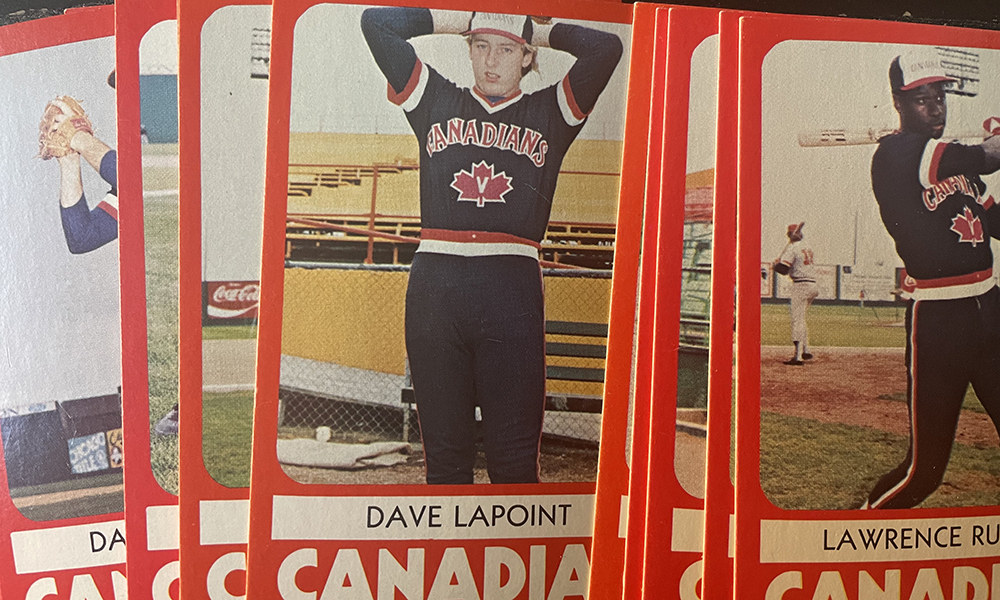
Dave LaPoint (Glens Falls)
If you grew up a fan of baseball in the ’80s or early ’90s, you’ll likely remember Dave LaPoint and his turn with the hometown Yankees (1989-90). Or, if you were an AC Yankees fan, who happened to be at Heritage Park on August 18, 1986, you would’ve been there for “Dave LaPoint Night,” during which the at-the-time Detroit Tiger and Glens Falls native, who starred for Glens Falls High School, along with another future major league pitcher in David Palmer (see below), was honored. LaPoint was quoted that night as saying of his current team: “Anytime you go from a last place club [i.e. the San Francisco Giants] to a potential first place club, especially at this stage of my career, I have to think it’s the best thing that’s happened to me in my career,” he said. “I have never pitched on a team with a player who has hit 20 or more homers, and the Tigers have six guys capable of doing that.” The six players he was referring to were Lance Parish (22), Darrell Evans (29), should-be Hall of Famer Lou Whitaker (20), would-be Hall of Famer Alan Trammell (21), Darnell Coles (20) and Kirk Gibson (28). While LaPoint never put up stellar numbers—he ended his career with a 4.02 ERA, with an 80-86 lifetime record—he will always be a fan favorite up here in this neck of the woods. Since his cards were produced during an era of extreme overproduction, they are plentiful and cheap. Look out for his 1983 Donruss rookie card, with LaPoint in a St. Louis Cardinals uniform, for $0.50-$1, or his 1977 TCMA Minor League card, where he appears on the Penn League club for the organization that drafted him, the Milwaukee Brewers ($3-$5). He also appears in the Vancouver Canadians’ 1980 TCMA Minor League set, which I picked up for $3 recently at the Gristmill Antiques Center in Troy.
Tommy Lasorda* (Schenectady)
The late Tommy Lasorda, best known as the portly, highly animated manager of the LA Dodgers, who led the team to two World Series victories, one in ’81, the other in ’88, grew up in Pennsylvania and was a pitcher, who would later sign with the nearby Phillies. After serving two years in the Army from 1946-47, Lasorda returned to baseball, playing a season with the C-class minor league club, the Schenectady Blue Jays, before being drafted by the Brooklyn Dodgers in ’49. Lasorda would see choice few innings between 1954-55, and would later be sold to the Kansas City Athletics, where he went 0-4 in ’56. Thankfully, he got into managing—and was later inducted as a manager into the baseball Hall of Fame in 1997. Despite his short stint in a Dodgers uniform as a pitcher, Lasorda does have a rookie card in the oversized, colorful 1954 Topps set. Because he’s a HOFer, you’ll have to pay a few extra clams for this one: Depending on condition or grade, a Lasorda rookie could put you back $100-$4,000. If you don’t want to chase his rookie, shoot for the ultra-cheap 1988 Topps Lasorda, which you can probably find in a bargain bin for $0.50-$1.
Johnny Lavin (Troy)
Playing just 16 games for the St. Louis Browns in 1884, Troy’s Johnny Lavin didn’t really leave his mark on the game of baseball, though he did smack 11 hits and score 9 runs in 52 at bats. Astoundingly, in 1921, the William Neilson Dairy Limited company produced a one-off baseball card set for its Neilson’s Chocolates brand, which included a card featuring Lavin—though his last name was spelled incorrectly (“Lavan”). A Lavin, graded 1.5 out of 10 (or “fair”), sold in 2018 for a reasonable $18.
Hot Tip: Interestingly, the Neilson’s Lavin card is in the archives at the Metropolitan Museum of Art in New York City, as part of the sprawling Jefferson Burdick Collection. For the uninitiated, Burdick is basically the father of the baseball card collecting hobby, having amassed thousands of primitive cards and come up with the hobby’s equivalent of the Dewey Decimal System (example: the “T206” cataloging code in front of the 1909-11 Honus Wagner card is Burdick’s doing).
Mike Lawlor (Troy)
Another Troy-bred baller, Lawlor split his major league ball career in the early 1880s between the godawful Troy Trojans and Washington Nationals, respectively. Playing just six total games for the two clubs in 1880 and then in 1884, Lawlor had just one hit in 16 at bats. His short stint in the majors did not get him on a baseball card.
Al Leiter* (Albany-Colonie Yankees)
Kids growing up in the Capital Region in the late ’80s will remember Leiter’s stint with the AC Yanks in 1987. One of the New York Yankees’ most promising pitching prospects, Leiter never truly lived up to his potential there. (His 1988 Topps rookie card is a $0.50-$1 oddity, given that the company first issued it with his minor league teammate, Steve George, on the front; it was later corrected with Leiter in George’s place.) However, once Leiter was traded to the Toronto Blue Jays in 1990, things started looking up for the southpaw, who won back-to-back World Series rings with the club in 1992 and 1993, and then, after the expansion draft in 1996 sent him to the newly minted Florida Marlins (he’d pitch a no-hitter that year), he won a surprise third ring with the fish in ’97. Truly a late bloomer, Leiter would have some of his best years towards the end of his career with the New York Mets, going 17-6 in 1998, 16-8 in 2000 (the year the team lost to crosstown rivals the Yankees in the “Subway Series” championship) and 15-9 in 2003. Besides his rookie year goof, there’s tons of cheap Leiter material out there, including his first card, the 1987 ProCards minor league issue, featuring Leiter in a AAA Columbus Clippers’ jersey ($1-$2).
Joe Mahoney (Albany)
Albany’s Mahoney played just two years in the majors, but interestingly, in both leagues, one with the Baltimore Orioles of the AL (2012), the other with the Miami Marlins of the NL (2013). His most productive of the two years was with the fish, hitting a respectable .276, with 8 hits, 1 HR and 4 RBIs. Though Mahoney didn’t play for all that long, he does have some cardboard: You can find his rookie card in the 2008 Bowman Chrome Prospects set for $1-$2, or he has a number of minor league issues all for about the same price.
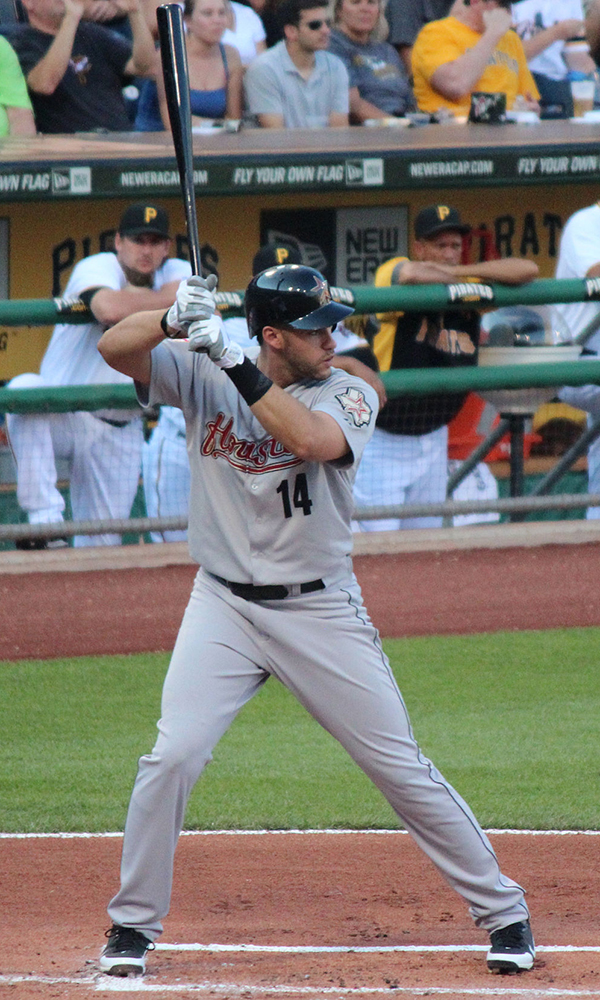
JD Martinez* (Saratoga Phillies/Tri-City ValleyCats)
It’s pretty amazing that Boston Red Sox superstar and 2018 World Series champ JD Martinez was once struggling to stay in professional baseball. He got the call-up in 2011 with the Houston Astros—hence his 2009 appearance with Troy’s ValleyCats. The year before that, he appeared on Saratoga Springs’ short-lived Phillies club (that’s a horse pun, not a Philadelphia baseball ripoff, by the way—or maybe it’s both). Never really finding his swing with the ‘stros, Martinez began heating up after being traded to the Detroit Tigers in 2014, hitting .315 that year with 23 dingers and 76 RBIs. The following year he posted 38 HRs and 102 RBIs and quickly became one of the league’s top power hitters. Between the Tigers and the Arizona Diamondbacks in 2017, he slugged 45 HRs and 104 RBIs, which caught the attention of the Sox, and the rest is history. In ’18, Martinez crushed 43 HRs and led both leagues with 130 RBIs. And he’s been a force ever since. Though Martinez shows up in the 2010 Bowman Chrome Prospects set ($1-$3), his best card is in the 2011 Topps Update set (the same one that includes José Altuve’s rookie) and can be had for $5-$10. If you happen to have the latter card in its Walmart blue-border parallel, graded in gem-mint condition, that’ll put you back about $300-$400.
Hot Tip: Much like Yankees singles, area sports card shops carry a lot of Red Sox cards, too, given the team’s massive local fanbase. So don’t despair; you’ll find JDs somewhere.
Bub McAtee (Troy)
Michael James “Bub” McAtee played just two major league seasons, 1871-72, for the Chicago White Stockings and Troy Haymakers, respectively. McAtee put up his best numbers with the Chi-town club, bashing 37 hits and 10 RBIs in 135 at bats. Interestingly, McAtee appears on a primitive “baseball card,” before that was an actual thing, in the 1866 E.S. Sterry & Co. Lansingburgh Unions/Troy Haymakers cartes de visite series. A full set is being sold on eBay for $159,000. Good luck trying to track down a McAtee!
Ed McDonald (Albany)
Albany native Ed McDonald played professional baseball from 1911-13 for two-and-a-half different ball clubs: the Boston Rustlers (1911), who then rebranded the next season to the Braves (1912), as well as the Chicago Cubs (1913). McDonald wasn’t terrible, but he wasn’t a superstar by any stretch of the imagination: In 1912, he led the NL in strikeouts with a whopping 91 in 459 at bats. McDonald appeared on his lone baseball cards in 1912, as a member of the Boston Braves. A T207 brown background version of McDonald’s card, graded 8 out of 10, sold for $1,314.50 in a Heritage Auctions auction in 2015.
Rudy Meoli (Troy)
Troy native Rudy Meoli, another finalist for best baseball player name ever, got the call-up in 1971 with the then–California Angels, where he played through 1975, before being sent down to the minors for a pair of years. (He was sort of your run-of-the-mill utility infielder.) The Angels then traded him to the Chicago Cubs, where he played in ’78, before ending his career as a Philadelphia Phillie in ’79. Because Meoli was nothing special on the diamond, you can find his cards for dirt cheap—that is, if card shops carry him (your best bet is probably Al’s House of Sports Cards in Schenectady). Meoli’s rookie card is in the 1974 Topps set and costs about $0.50-$1. He also has issues in the 1975, 1976 and 1978 Topps sets, all of which are in the same, um, ballpark.
Hot Tip: If you really want to dig deep with Meoli, try hunting down his 1977-78 Venezuelan winter league issue, which will put you back about $20-$30.
Ray Miner (Glens Falls)
The pitcher, who was born and raised in Glens Falls, played in just a single game for the Philadelphia Athletics during the 1921 season. And as you can imagine, it wasn’t a memorable one: He gave up four earned runs on two hits and walked three batters. Given Miner’s minor mention in the baseball history books, it makes sense that he doesn’t have a single card to his name—though his autograph is floating around cyberspace somewhere. One eBayer is hawking it for $130.
Dan Minnehan (Troy)
A minor leaguer for most of his career, at the advanced age of 30 Minnehan got his call-up, playing just a handful of pro games during the 1895 season with the Louisville Colonels of the National League. In 34 at bats, Minnehan showed his worth, slashing a head-turning .382, with 13 hits, 6 runs and 6 RBIs, but soon after, was sent down to the minors forever and ever, amen. Given all of his years in the minors, Minnehan did turn up in a variety of poses in the 1887-90 Old Judge set—one of which sits in the Metropolitan Museum of Art’s permanent collection. An 1887 Minnehan Old Judge card, featuring Minnehan in the batting pose and graded 60 out of 100, was sold by Heritage Auctions for $262.90 in 2005.
Hensley Meulens* (Albany-Colonie Yankees)
Meulens (a.k.a. “Bam Bam”), who ping-ponged between the Albany-Colonie Yankees, Columbus Clippers and the major-league ball club between 1988-90, was in the Yankees system through ’93, before traveling to Japan to play for the Chiba Lotte Marines and Yakult Swallows. He would eventually make it back to the states, playing briefly for the Montreal Expos and ending his career in Arizona, following the expansion draft, playing just seven games there. The first major league baseball player from Curacao, Meulens is fluent in five languages, and he’s found a second calling in the majors as a bench coach. Meulens appears in an AC Yanks uniform in the 1988 Eastern League All-Stars set ($3-$5), 1988 ProCards minor league set ($3-$5), the 1989 ProCards minor league set ($3-$5), the 1989 Star Minor League Prospects set ($3-$5), as well as the 1989 Best Minor League set ($3-$5). Meulens’ best normal-issue rookie card is his 1989 Upper Deck card, which can be found for about $0.50.
Billy O’Brien (Albany)
Albany’s Billy O’Brien, who put in five years of service in the bigs between 1884-90, played first and third base for the St. Paul White Caps (1884), Kansas City Cowboys (also 1884), Washington Nationals (1887-89), before concluding his career with the Brooklyn Gladiators (1890). Though he didn’t put up spectacular numbers, O’Brien did lead all leagues in 1887 with 19 home runs (coming in second was former Troy Trojans player and future Hall of Famer Roger Connor, with 17). As luck would have it, O’Brien appears in the 1887-90 Old Judge set, in a variety of poses. Back in 2019, one of them, graded 50 out of 100, was sold by Heritage Auctions for $870.
Cinders O’Brien (Troy)
John “Cinders” O’Brien, with a best-in-class baseball nickname, played pro ball from 1888-90, for a trio of Cleveland teams—the Blues of the American Association, the Spiders of the National League and the Infants of the Players’ League—before ending his career with the Boston Reds in 1891. A pitcher, O’Brien put up respectable numbers, ending his career with a 3.68 ERA, an arm-wrecking 113 complete games in 136 games played, and striking out just shy of 400 men. Cinders burned his way onto some cardboard, too, turning up in a variety of poses in the 1887-90 Old Judge set, one of which is in the permanent collection at the Metropolitan Museum of Art. Heritage auctioned off three different copies of O’Brien’s Old Judge cards in 2005, each of which selling between $280-$1,200.
David Palmer (Glens Falls)
Besides Dave LaPoint (see above), the other star pitcher to ascend to the majors from Glens Falls High School was David Palmer, who got the call-up in 1978 with the Montreal Expos, and pitched for the MLB team until 1985 (he was on the DL for all of ’83). Palmer’s earliest years were his best, putting up a 10-2 record and stunning 2.64 ERA in 1979. He would later sign as a free agent with the Atlanta Braves and Philadelphia Phillies, and eventually, end his career as a Detroit Tiger. His career statline is pretty solid, going 64-59, with a lifetime 3.78 ERA and 748 punch-outs. Certainly, Palmer was a big deal in Glens Falls, but he never reached superstar status on the diamond, so his cards can be found for relatively cheap prices. You can find his rookie card in the 1980 Topps set for $0.50-$1, and he has multiple issues in 1981 and beyond.
John Pappalau (Albany)
Pitcher Pappalau, an Albany native, played just a single professional game in 1897—and there’s a reason why: In his lone outing for the Cleveland Spiders, Pappalau surrendered 16 runs (14 earned) on 22 hits with six walks. His three strikeouts in the game didn’t save his pro career. Despite his one atrocious start, Pappalau does appear in the ultra-rare 1898 Cameo Pepsin Pin set, though the copyeditor clearly took the day off: his last name is misspelled. In graded excellent condition (i.e. 5 out of 10), the Pappalau pin will cost you about $400-$500.
Dan Peltier (Clifton Park)
Clifton Park’s Peltier, who reached the bigs as an outfielder, played three seasons in the majors, starting with the Texas Rangers in 1992 and ending with the San Francisco Giants in ’96. He hit a respectable .255 with 62 hits, 27 runs, 28 RBIs and one dinger over his career, but wound up playing just 105 total games in the bigs. That said, given the fact that he was a major leaguer during the “junk wax” era of baseball cards, Peltier appears on a bunch of cards. His rookie card can be found in the 1991 Upper Deck ($0.50) and 1991 Bowman ($0.50) sets, along with a variety of other issues spread over the next couple of years.
Hunter Pence* (Tri-City ValleyCats)
Though Pence isn’t from around these parts, he did spend the summer of 2004, his first as a professional baseball player, in Troy as a member of the Tri-City ValleyCats. An outfielder by trade, Pence would get the official call in 2007, eventually winning World Series rings with the San Francisco Giants in 2012 and 2014, getting a lot of attention for being such a postseason stud. He was also a well-respected workhorse, leading all of baseball in games played in 2013 and 2014. After a brief stint with the Texas Rangers in 2019, Pence re-signed with the Giants and announced his retirement last September. In all his career numbers are pretty stellar, having hit a lifetime .279, with 1,791 hits, 244 HRs, 891 runs, 942 RBIs and 120 SBs. He also holds a relatively high career WAR of 31. Pence’s cards are plentiful in the hobby and can be acquired for relatively low prices. Find his pre-rookie cards in 2004 (Donruss Elite Extra Edition and Upper Deck SP Prospects; $2-$5), or grab his first rookie card in the 2006 Bowman Chrome set ($2-$5). For collectors looking for a little more cents to their Pence, one eBay seller has a pristine (graded 10 out of 10) autographed 2004 UD SP Prospects card of the player for sale for just shy of $1,500.
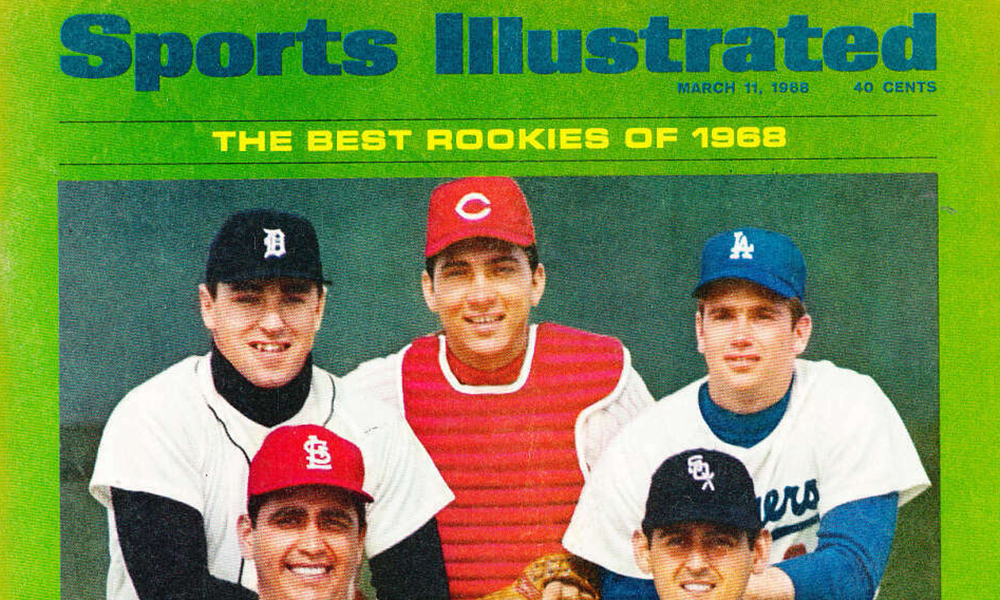
Don Pepper (Saratoga Springs)
Father of future star golfer and TV broadcaster Dottie Pepper, Don spent the majority of his seven-year professional baseball career in the minors—though he did get a four-game call-up in 1966, logging three at bats as a first baseman/pinch hitter. His quick turn in the majors wasn’t enough to get him emblazoned on a Topps card, but Pepper does appear in a few obscure minor league issues, including the Thomasville Tigers’ 1963 star panel set. You can pick one up on eBay for about $20. He also appears on a Sports Illustrated cover from 1968, featuring future Hall of Fame Johnny Bench, among others, which can be had for $15-$30.
Pascual Pérez* (Albany-Colonie Yankees)
Though Pérez, a pitcher, was active in the majors from 1980 to 1991, dividing his career between the Pittsburgh Pirates, Atlanta Braves, Montreal Expos and New York Yankees, he wouldn’t make an appearance with the AC Yanks until his final season in the majors. Pérez’s best years were pitched in a Braves uniform, with the pitcher posting a 15-8 record in ’83 (he was named to the All-Star team that year) and 14-8 the following season. He also led all of baseball with a minuscule 0.941 WHIP in 1988. Collectors can find Pérez’s rookie card in the 1981 Topps set, sharing a card with future Yankees bench coach Tony Peña ($1-$2). For oddball collectors, Pérez was the subject of two error cards, one in 1982, the other in 1983. In the 1982 Topps set, the manufacturer forgot to put his position on the card (and later corrected it), causing a mini scramble for the error card, which costs about $20-$30; and in the 1983 Donruss set, the manufacturer wrote “Twins” on the front of his card, when in fact he was on the “Braves.” Later corrected, the error card goes for about $3-$5.
Andy Pettitte* (Albany-Colonie Yankees)
Pettitte, a pitcher who spent the majority of his career with the Bronx Bombers, won a quintet of world championships in pinstripes—1996, 1998, 1999, 2000 and 2009—and rarely posted anything short of a winning record. For example, in his second year as a Yankee, Pettitte led the AL with 21 wins, and would go on to pitch a stunning win-loss record of 256-153 lifetime, ending every season with a record .500 or better. His lifetime ERA comes in at a respectable 3.85, and he punched out 2,448 batters. Between 1993 and 1994, Pettitte made 12 appearances as an AC Yank, going 7-2 with a 2.71 ERA during the latter stint (that was the same season Derek Jeter appeared in a handful of games for the team). While Pettitte has hundreds of cards produced over his 18-year career, his best piece of cardboard is his first, his 1993 Bowman rookie card, which will put you back $5-$20, depending on condition.
Ed Phelps (Albany)
Catcher Ed Phelps, who played pro ball from 1902-13, put together a respectable career at the plate, logging a .251 lifetime batting average and collecting 460 hits, scoring 186 runs, bashing 205 RBIs and swiping 31 bases. As a Pittsburgh Pirate, Phelps helped win the team pennants in 1902 (his rookie season) and 1903, and would end up playing in the World Series that year, in which the Boston Americans ultimately bested the Pirates. Given Phelps’ record on the diamond, he has a few pieces of cardboard in some highly sought-after sets. A Phelps card from the 1909 American Caramel set, graded 4 out of 10, is selling on eBay for $345, while a 1911 T205 Sweet Caporal, graded 7 out 10, sold for a touch over $525 in 2015 in a Heritage auction. He also appears in the world-famous 1909-11 T206 set, and his card from it, graded 6 out of 10, went for about $200 in 2007 (that price has likely doubled or even tripled in recent years). His Pirates teammate, Honus Wagner, who ended up in the Hall of Fame, commands the highest price of any card in the set, as the issue was pulled from production early on for unknown reasons. Last October, a T206 Wagner, graded just 3 out 10, was auctioned off for $3.25 million.
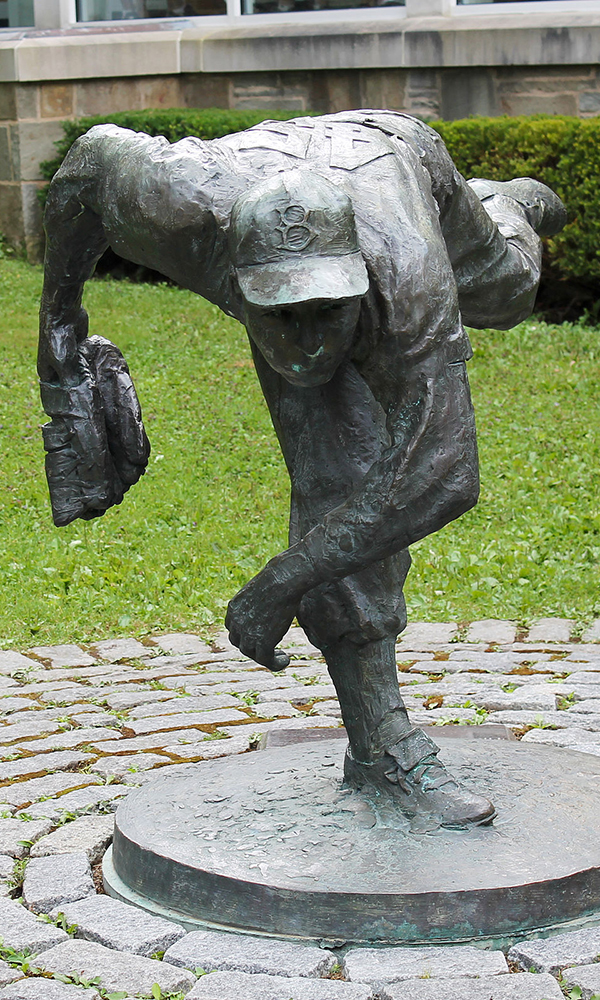
Johnny Podres* (Glens Falls)
Although Brooklyn Dodgers’ pitcher Johnny Podres was born and raised an hour away in Witherbee, NY, he spent the better half of his life after his baseball career was over in Glens Falls, where he died in 2008 at the age of 75. Active from ’53 to ’69, Podres was a major star in his day, winning the Most Valuable Player award in the 1955 World Series, in which the Dodgers felled the formidable Yankees in a cross-borough rivalry for the ages. (He also won World Series rings in ’59, ’63 and ’65, though he didn’t pitch in the ’65 series.) Skipping the ’56 season to serve in the military, Podres led all AL pitchers in ’57 with a 2.66 ERA, and ended his career with a stellar 3.68 ERA, with 1,435 strikeouts and a microscopic WHIP of just 1.317. He was elected to the Hall of Fame in 2002. Since Podres put up star-quality numbers in his day, his cards aren’t hard to come by in the ’50s and ’60s, but they’ll cost you a few extra clams (plus, Brooklyn Dodgers cards run at a premium to others from that era). If you want to pick up Podres’ rookie card, it’s in the gorgeous 1953 Topps set, featuring hand-painted likenesses of each player. An ungraded version will cost you about $200-$300. If you’re into oddballs, Podres has a colorful card in the 1961 Bell Brand Potato Chips set, which a copy, graded 8 out of 10, was recently on sale on eBay for $750.
Hot Tip: At the Collector’s Friend in Rensselaer, I was able to score a 1956 Topps Podres for a steal of a deal. I think I paid about $10 for it. The shop has an assortment of his cards for sale here.
Jorge Posada* (Albany-Colonie Yankees)
Posada, who caught for the Yankees during their ’90s/’00s dynasty and spent his entire, 17-year career in pinstripes, won four World Series rings with the team (1998-2000, 2009). In ’93, he played seven games as an AC Yank, hitting .280 and cracking seven hits. He’d get the call-up two years later and ended up putting together decent but not Hall of Fame numbers, though he is one of just five catchers with at least 1,500 hits, 350 doubles, 275 home runs and 1,000 RBIs in a career. He was also a five-time All-Star and had his number retired by the Yanks. Posada’s cards are plentiful, but Capital Region collectors will want to hunt down his 1994 Bowman and 1994 Bowman’s Best cards, which can be had for $10-$20 apiece. For those with dollars in their eyes, a ’94 Bowman Posada, graded 10 out of 10, was recently listed on eBay for $1,500.
Jack Rafter (Troy)
I can imagine Rafter wasn’t swinging from the rafters when he learned that he’d only be playing in a single professional baseball game in his career. That was 1904, when the backup catcher for the Pittsburgh Pirates had three chances at bat, and per his statline, came up empty each time. Rafter’s one at bat didn’t get him on a baseball card either.
Mariano Rivera* (Albany-Colonie Yankees)
Cue Metallica’s “Enter Sandman.” That was the signature walk-on song for Rivera, at least during his save appearances at Yankee Stadium, most of which he converted. Rivera, who became the first player ever unanimously inducted into baseball’s Hall of Fame, ended his career with a gobsmacking 652 saves, ERA of 2.21 and WHIP of 1.000. The guy even had his own “day” at Saratoga Race Course. (If you were wondering why he made this list, it was because he played nine games in 1994 for the AC Yanks.) Oddly, even though Rivera first got called up in 1995, his early cards are few and far between. The gem, of course, is his 1992 Bowman rookie card, on which he might be wearing the ugliest clothes in the history of baseball cards, but which can be had for $30-$60 (raw) and in a graded mint 9 out of 10, about $150. A fan favorite is his 1996 Donruss Signatures autographed card, which is in the $100-$125 range, ungraded. And if you’re a major fan, you might want to try tracking down his 1990 Diamond minor league card, which was recently being sold in graded gem-mint condition on eBay for $3,000-$5,000.
Deion Sanders* (Albany-Colonie Yankees)
Centerfielder Sanders, who was active in the MLB from 1989 to 2001, was one of just a handful of multi-sport players in baseball history, also excelling in the NFL as a defensive back and running back (he was a two-time Super Bowl winner). “Neon” Deion, as he was known, played 33 games in ’89 with the AC Yanks, batting .286 with 34 hits and 17 stolen bases. Speaking of that last stat, Sanders was known for his speed, leading both leagues in triples (14) in 1992 and swiping 38 bags in ’94. Sanders would end up playing for the Yanks, Braves, Reds and Giants, before ending his career in ’01 with the Reds again. Sanders actually appears on multiple minor league cards as an AC Yank, including in the 1989 Star Albany update set ($10-$15), 1989 ProCards minor league ($10-$15) and the 1989 Best minor league platinum team set ($5-$10). (His single cards from those sets run in the $3-$5 range.) His regular issue (baseball) rookie cards can be found plentifully and cheaply. Try his 1989 Topps Traded, 1989 Donruss The Rookies and 1989 Fleer Update cards ($2-$3) for easy, er, steals.
Jaime Schultz (Albany)
Schultz, a Capital City native, was active between the 2018-19 major league seasons, pitching for the Tampa Bay Rays and Los Angeles Dodgers. Unfortunately, the baseball gods weren’t on his side, at least when he was on the mound. With Tampa, for instance, he yielded 18 hits, 19 earned runs, 6 home runs and 17 walks over 30.1 innings. Needless to say, he hasn’t made it back to the bigs, and after being designated for assignment by the Dodgers in 2019, he was picked up by the Oakland A’s, and is still kicking it in the Seattle Mariners organization. Schultz’s cardboard can actually be found in one of the most sought-after modern sets, 2016 Bowman Draft (you can pick up his autographed refractor parallel for $5-$10). He also makes an appearance in the 2017 Bowman Prospects set ($0.50-$1). Or, he has a spot in the 2018 Bowman Heritage High Number series ($0.50), which was produced with the classic 1969 Topps design.
Cy Seymour (Albany)
Centerfielder and pitcher James Bentley “Cy” Seymour—one of just a handful of Cys who ever played the game—was active in professional ball from 1896 to 1913, playing for the New York Giants, Baltimore Orioles, Cincinnati Reds and Boston Braves. Rocking a lifetime WAR of 40.7, Seymour ended his career with a beautiful .303 average, with 1,724 hits, 737 runs, 799 RBIs and 222 stolen bases. A true pitcher-hitter, he also was the NL strikeout leader in 1897 and 1898, while winning 25 games in the latter year. Seymour appears on a variety of baseball cards, including a number of poses in the variation-heavy 1909-11 T206 set. You can find him throwing ($80-$90), batting ($80-$90) or just posing for a portrait ($100-$150), with prices varying depending on condition and grading. He also makes appearances in the 1911 Mecca Double Folders set ($50-$100) and the 1910-11 Sporting Life series ($150-$200). There’s a lot more Cy where that came from.
Seth Sigsby (Cobleskill)
New York Giants pitcher Sigsby, the lone player who hails from Cobleskill on this list, played in just a single major league game in 1893 and gave up four runs (three earned) on one hit, with two strikeouts. Given the timing of his short stint in the bigs, Sigsby was not the recipient of any cardboard.
Kevin Smith (East Greenbush)
Smith, a Columbia High School grad who went on to play for the University of Maryland, College Park, was drafted by the Toronto Blue Jays in 2017 and quickly became a force to be reckoned with, showing off power at the plate and speed on the base path. After spending time in A, AA and AAA in the organization, with a year off last year due to the pandemic, Smith finally got the call in August 2021, where he’s been helping fill in for injured second basemen Cavan Biggio and Santiago Espinal. Smith can be found on a number of issues, including the 2017 Bowman Draft Chrome series ($2-$3) and 20`19 Bowman ($1-$2). Like most of the card sets these days, you can also find pricey parallels of each regular card, and Smith has a few on eBay: a 2017 Bowman Draft Chrome blue wave refractor autograph, for example, graded 9.5 out of 10 by BGS (and the auto, a 10 out of 10), will put you back just north of $100.
John Smoltz* (Glens Falls Tigers)
“John Smoltz,” you say? “The Hall of Famer?” Yep. Before Smoltzy went on to become a superstar starting pitcher with the Atlanta Braves and then reinvent himself as an elite closer later in life, he was a lowly farmhand playing for the AA Glens Falls Tigers—and pitching pretty poorly. In 21 games, he posted an ugly 4-10 record and 5.68 ERA. Luckily, he’d learn his lesson and get a hell of a lot better over time. He ended his major league career 213-155, with a 3.33 ERA, 3,084 strikeouts (putting him on the elite 3,000K list) and 154 saves (as a closer). He also won a World Series ring in ’95, the Cy Young in ’96 and was an eight-time All-Star. Even though Smoltz is in the Hall and put up superstar numbers, his cards aren’t really that hard to come by or expensive. His most popular regular-issue card is in the 1989 Upper Deck set ($5-$10)—and Fleer even snuck him into its 1988 Update set ($3-$5). If you want to spend a few more bones, try hunting down his 1989 Topps Tiffany rookie, which will run you about $25-$50, depending on condition.
Hot Tip: Smoltz, along with Chris Hoiles (see above), made it into the 1987 ProCards Glens Falls Tigers team set. I picked up a copy of it at Hall of Frames in Utica for $25. The Smoltz is the big name in it, so expect to pay $15-$25 for it alone, if you find it.
George Springer* (Tri-City ValleyCats)
Springer, who spent his first summer as a pro in Troy playing for the ValleyCats, has gone on to bigger and better things, to say the least. The hard-slugging outfielder, who got the call-up from Houston in 2014 and played there through 2020, has knocked the stuffing out of many a baseball, racking up 832 hits, 174 home runs and 458 RBIs in his young career. He was also named the World Series MVP in 2017 and obviously has a ring to go along with the trophy, too. During the offseason, Springer signed with the Toronto Blue Jays, so look out for more fireworks from the Great White North. You can find a lot of Springer cards out there in cyberspace, so I’d start with his earlier stuff and work my way forward. You can find his first card, before he made his big-league debut, in the 2011 Bowman and Bowman Chrome sets ($5-$10), or grab his true rookie card in the 2014 Topps Update set ($10-$15). (Of course, if you end up buying graded cards, you’ll pay a premium—and one eBay seller recently had his 2011 Bowman Sterling autographed card, limited to just one-of-one, for sale for $20,000!)
Randy St. Claire (Glens Falls)
Currently a minor league coach in the Blue Jays organization, St. Claire is originally from Glens Falls, getting his major league call-up as a pitched in 1984 with the Montreal Expos. He was with the Expos until the ’88 season, when he was part of a multi-player deal that sent him to the Reds. He was released in ’89 and picked up/released by a number of other teams—the Twins, the Rangers, the Braves, the Mariners, the Blue Jays, the Pirates—seeing some more big league action through ’94, but never making much of a dent. Despite his lifetime 4.14 ERA, he did go 12-6, with nine saves. And we still love him up here in the Capital Region, so not all is lost. If you’re looking for St. Claire cardboard, he has more than a few issues to his name. His rookie card can be found in the gorgeous, black-bordered—and thus, difficult to find in condition—1985 Donruss set ($0.50). You can also find a bevy of his minor league cards spread out throughout the ’90s, when he was ping-ponging between the bigs and the farms.
Tim Stauffer* (San Diego Padres)
Though Stauffer was born in Portland, ME, he spent his formative years in Saratoga Springs, starring for Saratoga Central Catholic High School. A mammoth at the plate and a star pitcher, Stauffer was drafted with the fourth overall pick in the 2003 MLB draft by the San Diego Padres, a highly touted prospect on paper, with a lot of upside. Though injuries largely derailed his career, Stauffer did get his call-up in ’05, pitching in various capacities for the Pads through 2014, and spending time with the Minnesota Twins, New York Mets and briefly, Arizona Diamondbacks organizations between 2015 and 2016. Though Stauffer’s first official card can be found in 2003’s Upper Deck Prospects set ($0.50), along with an autographed version ($3-$5), the floodgates opened up in 2004, with a number of issues from a bunch of different companies. Even his rarest issues can be found for dirt cheap, with his 2004 Bowman Chrome autographed card available on eBay for just $3.
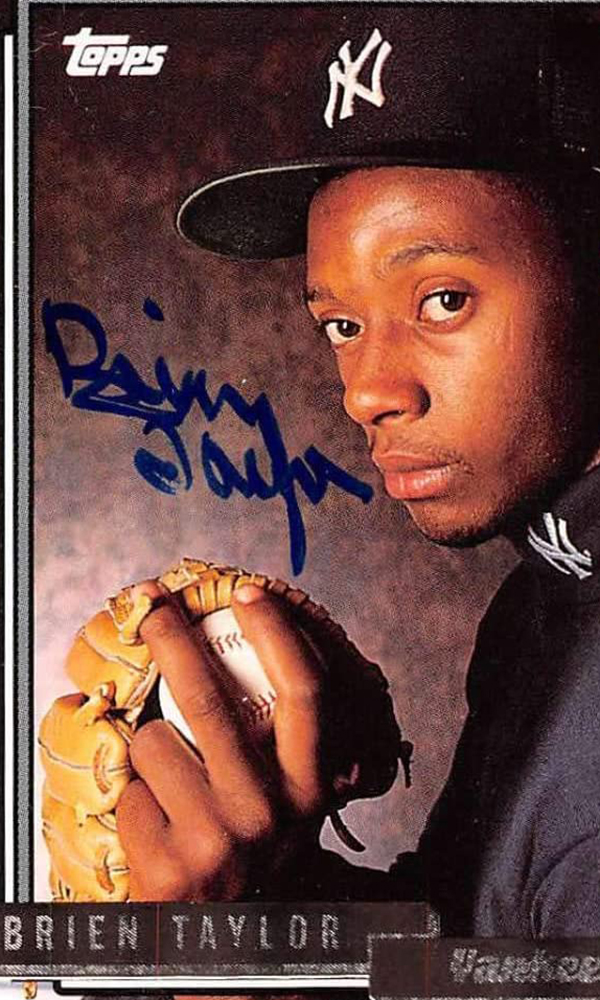
Brien Taylor* (Albany-Colonie Yankees)
One of the most highly touted pitching prospects in the Yankees organization in the ’90s, Taylor was drafted No. 1 overall in the 1991 MLB draft—but astonishingly never got the call to the bigs. He did wind up in an Albany-Colonie Yankees uniform in ’93, posting a stunning 13-7 record, with a 3.48 ERA, but it all basically unraveled from there. After getting into a fight later that year, his injuries cost him the entire ’94 season, and when he returned to the minors, his velocity was way down, and he never regained his form. Because of Taylor’s status following the baseball draft, Topps decided to cash in on his star, inserting an autographed Taylor card in the sealed factory set for its 1992 Gold set, a hot commodity at the time (the idea being that you’d have to break open the set to get to the Taylor gold autographed card). After his subsequent fall from grace, Taylor’s signed card, which in the early ’90s was selling in the hundreds of dollars, now goes for about $10-$20 (you might be able to get that quite a bit lower, depending on the seller). Other signed Taylor cards were inserted into minor league packs ($5-$10), and he has a few non-signed cards, such as ’92 Bowman and ’95 Bowman ($0.50), but nothing comes close to the desirability of that original ’92 gold card autograph.
Ira Thomas (Ballston Spa)
Ballston Spa’s Thomas first got the call by the New York Highlanders in 1906, playing with the team through 1907, before winding up on the Detroit Tigers for a season, and ending his career with the Philadelphia Athletics in 1915, playing just three games over his last two seasons. Despite puttering out at the end, Thomas, a catcher, put up some OK numbers, hitting a career .242, with 327 hits, 124 runs, 155 RBIs and 20 stolen bases (he hit just three home runs). And well, that has to account for something, because in his 10-year career, he wound up winning three World Series rings, one in 1910, another in 1911 and the last in 1913, all with the Athletics. As you can imagine, since Thomas played during the sweet spot of tobacco cards, he has a number to his name. In fact, he appears in one of the most desirable card sets of all time, the 1914 and 1915 Cracker Jack series, which are known for their bright colors and laundry list of future Hall of Fame names such as Ty Cobb and Christy Mathewson (they were actually inserted into Cracker Jack candy boxes and often come stained with the sugar). In 2018, a 1914 Cracker Jack Thomas, graded 5 out of 10, sold for $660, while a Thomas from the 1915 set, graded 9 out of 10, sold for a staggering $14,400 in 2019 (both hammer prices were realized in Heritage auctions). He was also featured in the 1909-11 T206, 1910-11 Turkey Red and the 1910 Philadelphia Caramel sets, all big-time sets and hard to come by in the hobby. Go, B-Spa!
Al Todd (Troy)
Troy native Al Todd played big-league ball from 1932-43, suiting up for the Philadelphia Phillies, Pittsburgh Pirates, Brooklyn Dodgers and Chicago Cubs—all organizations that have done big things in baseball history, just not during Todd’s run with them. A catcher, Todd got the call-up at the age of 30, putting together a respectable career statline: .276 BA, 768 hits, 35 homers and 366 RBIs. Luckily, Todd was able to find his way into a few card issues, too, including the 1941 Goudey Gum Co.’s set, which included different color variations behind the players (Todd’s card comes with a blue, yellow and red background, each of which has a different level of scarcity). A ’41 Goudey Todd, featuring the blue background and graded 6 out of 10, was sold by Heritage Auctions in 2011 for just under $500. If you don’t want to spend your entire paycheck on a nobody from Troy, shoot for his 1991 Conlon issue, which can be found for the much more convenient price of $0.50.
John Tudor (Schenectady)
Talk about an Electric City hook-up. Tudor, who started his major league career off with the Boston Red Sox in 1979, was the son of a General Electric engineer. After some up and down years early, Tudor was traded to the Pirates and then the Cardinals, where he turned himself into one of the elite pitchers of the ’80s, going 21-8 with a 1.93 ERA in 1985, with an MLB-leading 10 shutouts (he finished second in Cy Young award voting). From there, it was smooth sailing, and Tudor nary had a losing season, with ERAs in the twos and threes, splitting his time between the St. Louis and the Dodgers. He ended his career as a Card, going 12-4 with a spectacular 2.40 ERA in 1990. Though he will likely never get the call to the Hall, Tudor has a sparkling career statline: 117-72, 3.12 ERA, 988 Ks and a WAR of 34.2. Tudor has quite a bit of cardboard to his name, all of which is on the cheap side. I’d suggest hunting down his 1981 Topps rookie card, which can be had for $0.50-$1, at most. If you can find a mint or gem-mint version of his ’81 Donruss issue, a set plagued with mis-cuts and perforated sides, you might be looking at a $30-$50 card.
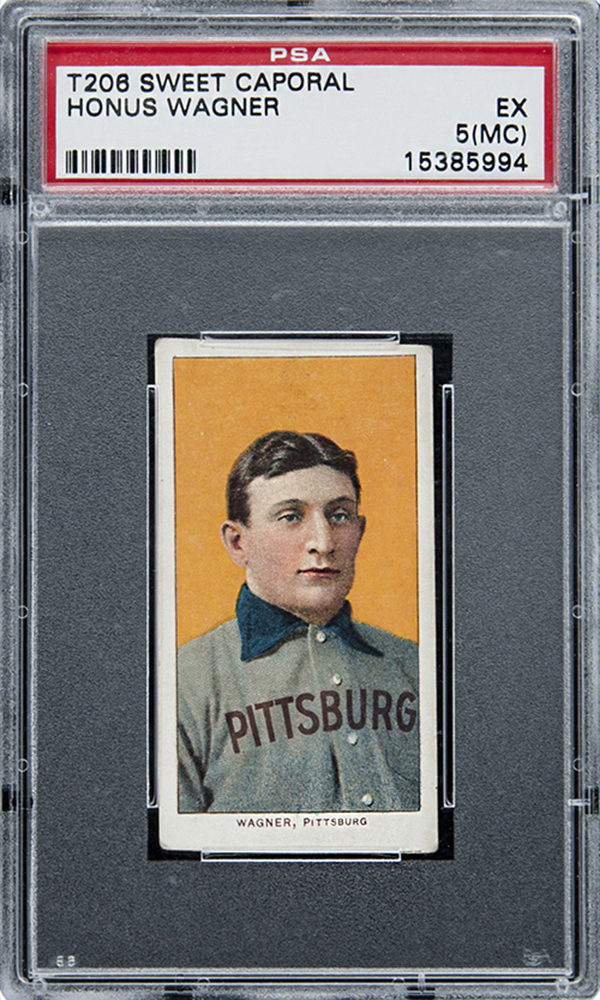
Honus Wagner* (Gloversville)
Hall of Famer Honus Wagner, who starred for the Pittsburgh Pirates, makes this list because of the time he spent playing summer ball at Gloversville’s Parkhurst Field in the 1900s, along with a number of other future Hall of Famers. Hitting a career .328, with 3,420 hits, and more than 1,700 runs and RBIs, Wagner was also one of the game’s greatest fielding shortstops (some believe him to be better than the Yankees’ Derek Jeter; see above). Either way, Wagner has it all over Jeter in terms of baseball card value (at least for the moment): Wagner’s 1909-11 T206 card, of which there are approximately 40 examples in existence, is one of the hobby’s most expensive rarities. In a recent auction, a lousy version of the card sold for $2.5 million.
Hot Tip: Of course, you don’t have to own the T206 to make your Capital Region card set complete. There are a number of other Wagner cards that cost a lot less. Check some of them out here. (Also, for a complete list of the other baseball greats that played summer ball in Gloversville, of which there are too many to list in this story, click here.)
Roger Weaver (Amsterdam)
Amsterdam native Weaver, a pitcher, played just a single season of big-league ball for the Detroit Tigers in 1980, and his statline tells the story: In just 19 games, he surrendered 32 runs (29 earned) on 56 hits, with 34 walks. But you can still find him in all his cardboard glory on his 1981 Topps rookie card ($0.50), which he shares with two other Tigers that baseball history forgot.
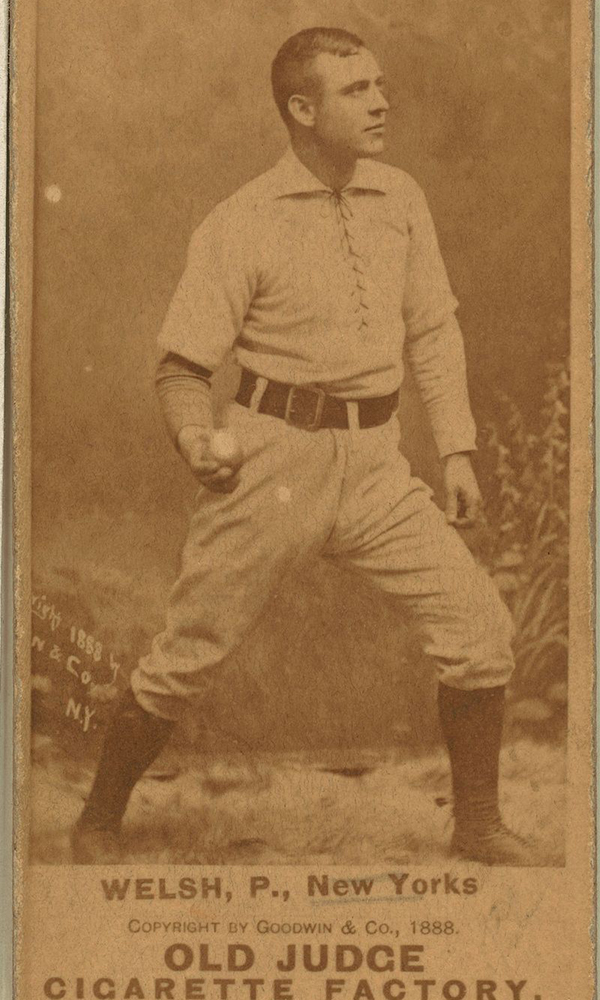
Mickey Welch* (Troy Trojans)
Another one of the five players to eventually make baseball’s Hall of Fame after playing for the endlessly crappy Troy Trojans in the 1880s, Welch put together a stellar 13-year career as a pitcher, playing exclusively with the New York Giants, following his three-year run with the Troylets, I mean, Trojans (he was actually on the team in 1882, when it broke the record for least-attended game in baseball history, with just six fans in the stands). But Welch would decidedly turn things around, ending his career with a 307-210 record and a tiny 2.71 ERA, along with 1,850 Ks. Between 1884-89, he had win totals that would make modern-day pitchers faint with jealousy (39-21, 44-11, 33-22, 22-15, 26-19 and 27-12). And these were the days before fancy doctors and surgeries to make arms go for longer than they’re supposed to. As you can imagine, Welch has some of the world’s most sought-after cardboard. Example: In a 2018 Heritage auction, an 1888 S.F. Hess Welch card, graded 40 out of 100, sold for $38,400. That same year, an 1888-89 Old Judge Welch, graded 6 out of 10, went for $14,400. You get the picture.
Casper Wells* (Schenectady)
Though Wells was actually born in Grand Rapids, MI, he played his high ball right here in the Capital Region at Schenectady High School, before being drafted in the 14th round of the 2005 MLB Amateur Draft by the Detroit Tigers. He would end up getting his call-up in 2010 and do time with the Mariners, Athletics and White Sox, before ending his run in the majors with the Phillies in 2013. Wells was never a superstar but put together a decent career statline: .230 lifetime BA, 158 hits, 25 dingers (he hit four straight in four games in a row), 81 RBIs and 6 SBs. There’s quite a bit of cardboard to choose from in terms of Wells, who first appears in Razor’s 2008 card sets ($2-$5). But I’d suggest looking for his Topps cards, especially his 2013 Topps Update card, which features Wells, in a White Sox jersey, in the process of making a diving catch ($0.50).
Deke White (Albany)
A pitcher, White played during just a single major league season, 1895, for the Philadelphia Phillies, logging a career win-loss ratio of 1-0, after three games played, but giving up 23 runs (19 earned) on 17 hits and 13 walks. No cardboard for you! [said in Seinfeld‘s Soup Nazi voice].
Warren White (Milton)
Milton’s White, a bushy-mustachioed third baseman and shortstop, who played between 1871 and 1884 (after ’75, he didn’t return until that final season), was a member of the Washington Olympics, Washington Nationals, Washington Blue Legs, Baltimore Canaries and Chicago White Stockings. Prior to playing big-league ball, he served in New York’s 14th Heavy Artillery Regiment in the Civil War. Though White has no primitive cards to his name, an interesting item signed by him appeared in a Heritage auction back in 2011: an 1884 Union Association baseball contract from the short-lived league, which White’s final team, the Washington Nationals, was part of for just a single season. The historical document sold for $26,290.
Bernie Williams* (Albany-Colonie Yankees)
Like teammates Jorge Posada and Derek Jeter, Williams spent his entire career in Yankees pinstripes, putting together what might not be Hall of Fame numbers but are pretty damned good ones, all things said and done. Williams, who makes this list for the 225 games he played for the AC Yanks in the minors, wound up with these career numbers in the majors: .297 career batting average, 2,336 hits, 287 HRs, 1,366 runs, 1,257 RBIs and 147 SBs. Oh, and he also won four World Series rings with the Bronx Bombers (1996, 1998-2000), was the ’98 AL batting champ and had his number retired by the team. Because Bernie came up in the early ’90s, his rookie cards are plentiful and not at all pricey. You can find his rookie cards in the 1990 Topps, 1990 Donruss, 1990 Upper Deck and 1990 Score series ($1-$2), and you can find him in an AC Yanks uniform in the 1990 Star minor league set ($3-$5) and the 1990 ProCards minor league set ($3-$5).
Mike Witt* (Albany-Colonie Yankees)
Witt, who put together a 12-year career as a major league pitcher, hurling for the California Angels for the majority of it and spending his last two seasons and change in Yankees’ pinstripes, made just two appearances for the Albany-Colonie Yankees, one in 1991, the other in 1993. It was just a tiny divot in his otherwise decent career, during which he put together a 3.83 ERA, won 117 games and punched out more than 1,300 batters. Among his career-best feats, Witt pitched a perfect game in 1984, a year he went 15-11 for the Angels, and also pitched a combined no-hitter in 1990 as a Yank. While Witt’s rookie cards can be found in the 1982 Topps and Fleer sets ($0.50), a junk-wax oddity has sprung up in the last decade, which has gotten collectors semi-excited. It was discovered that a number of his 1990 Upper Deck cards were erroneously marked by a rather ugly, rectangular black box on the back of his card. You can find these babies for $50-$100, raw, and graded, for a lot more.
Mellie Wolfgang (Albany)
Albany native Wolfgang, a righty, pitched for the Chicago White Sox from 1914-18, the year before the infamous “Black Sox” scandal, which saw eight players from the team, including “Shoeless” Joe Jackson, accused of throwing that year’s World Series. Thankfully, Wolfgang was gone by then—and it didn’t tarnish a career that, though wasn’t particularly long, ended with decent totals: 15-14, with a 2.18 ERA and 111 punch-outs. And though he didn’t make an appearance in the ’17 World Series, the Sox did win, felling the mighty New York Giants, managed by the great John McGraw. Wolfgang was able to get himself on at least one card in the 1916 Sporting News set. A copy, graded 8 out of 10, was sold by Heritage Auctions in 2016 for $286.80.
Dave Zearfoss (Schenectady)
Schenectadian Zearfoss, a catcher, who started his career in 1896 with the New York Giants, ended it just a handful of years later in 1905 with the St. Louis Cardinals. Neither his numbers, nor his career is worth much of a story—he hit for a paltry .208 lifetime—and well, if you can imagine, advertisers of the day didn’t see too much of a reason to put him in cardboard form.
Ben Zobrist* (Tri-City ValleyCats)
Zobrist, who played his first professional summer in Troy as part of the Houston Astros organization, wound up making his way onto the Tampa Bay (Devil) Rays, getting called up in 2006 and taking a few years to find his rhythm. His breakout season was in 2009, when he slugged 27 home runs and 91 RBIs, slashed 28 doubles and batted .297, getting him on the AL All-Star team. He’d do brief stints with the Royals, where he won a World Series in 2015, and then Oakland, before landing with the Chicago Cubs in 2016, where he made his mark on baseball history, helping the team “break the curse” and win its first championship since 1908 (he was also named the World Series MVP). Zobrist retired last season. You can find his rookie cards in 2006, with his Topps Update rookie ($2-$3) and his Topps ’52 ($2-$3), costing about the same.
Hot Tip: Recently, you could actually buy Zobrist’s game-used jerseys, which he wore during his stint with the A’s, on eBay selling for $800 apiece.
All prices are subject to change and were based on estimates from eBay, Heritage Auctions and other historical sale data.


